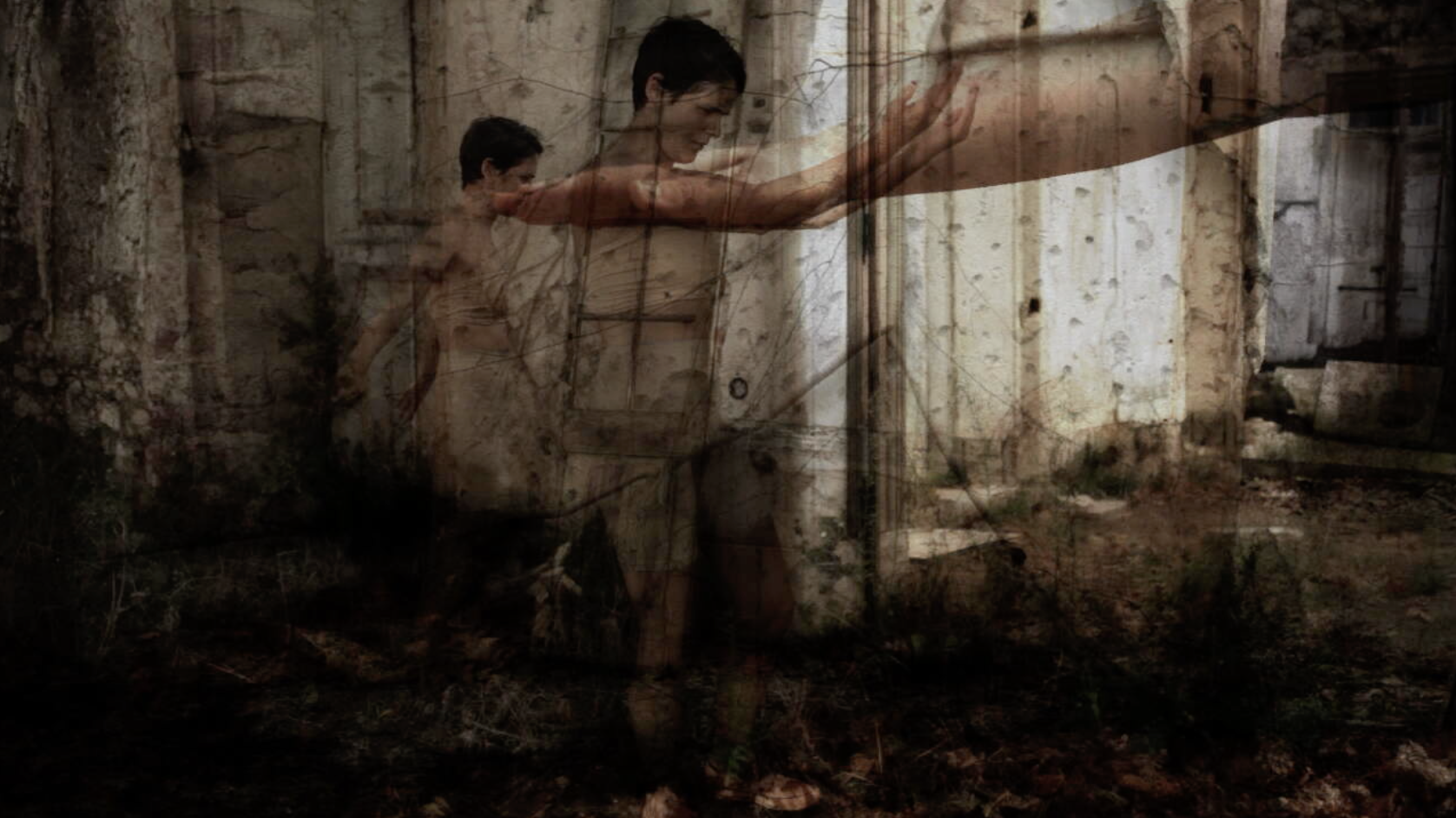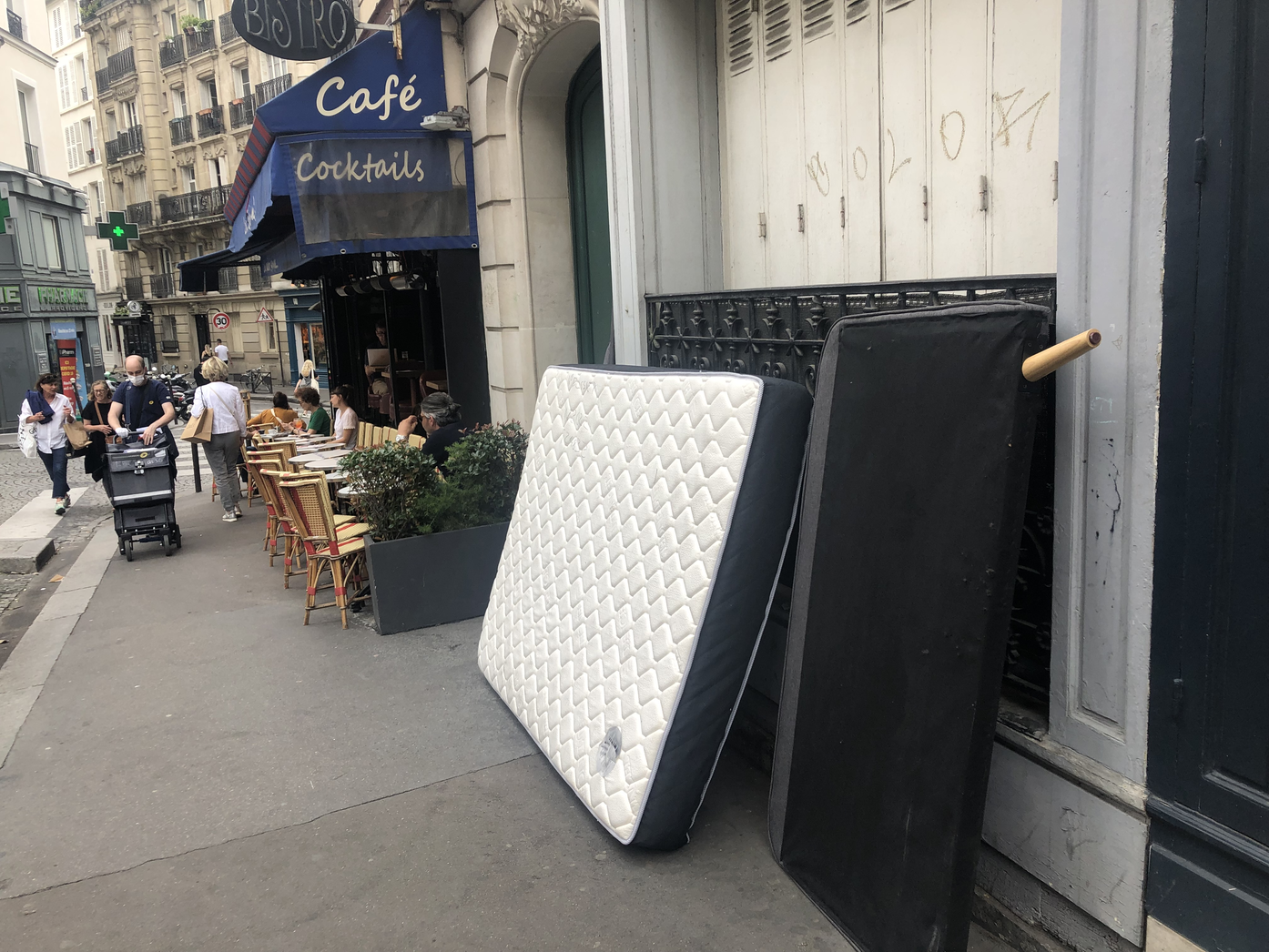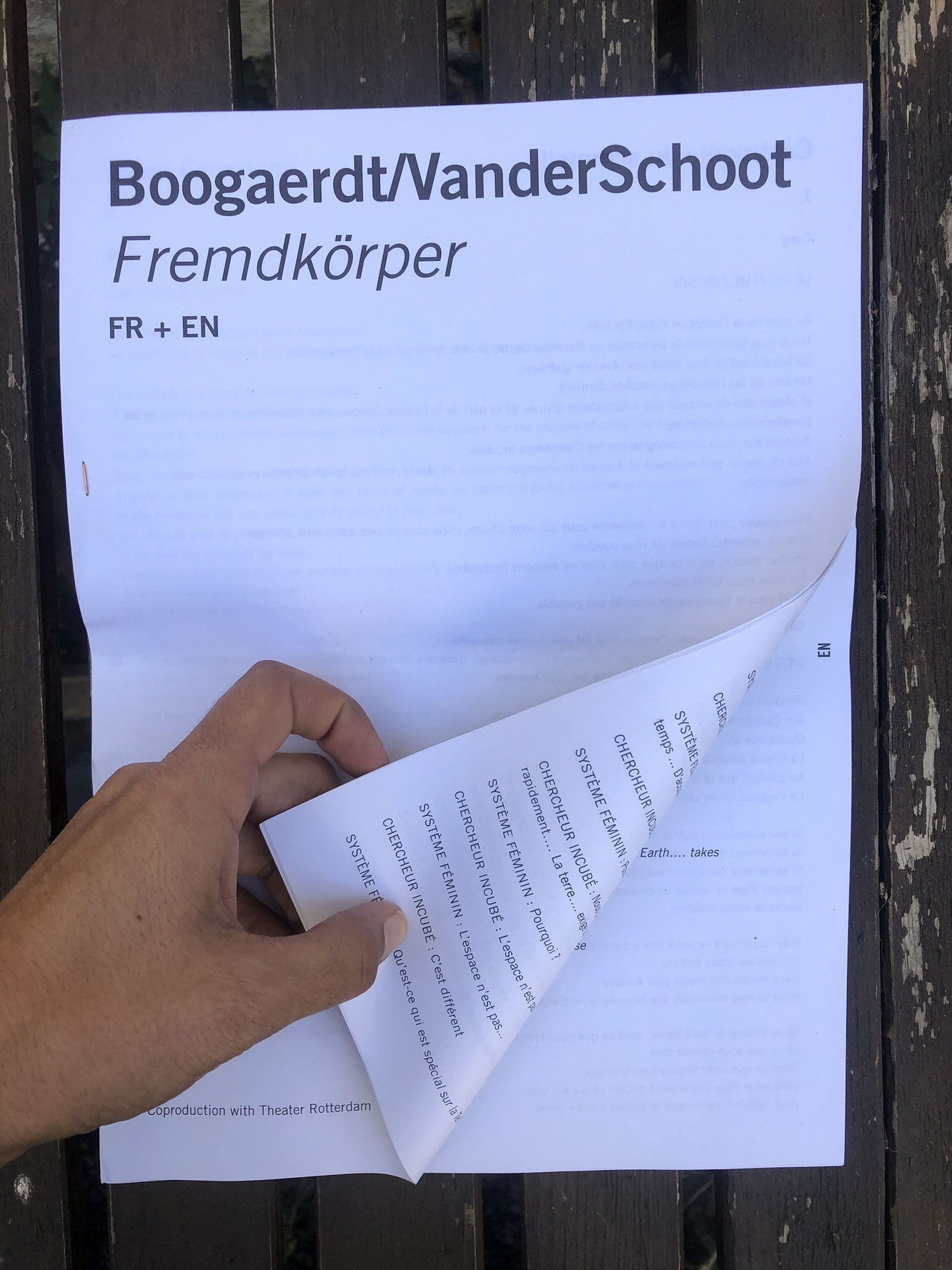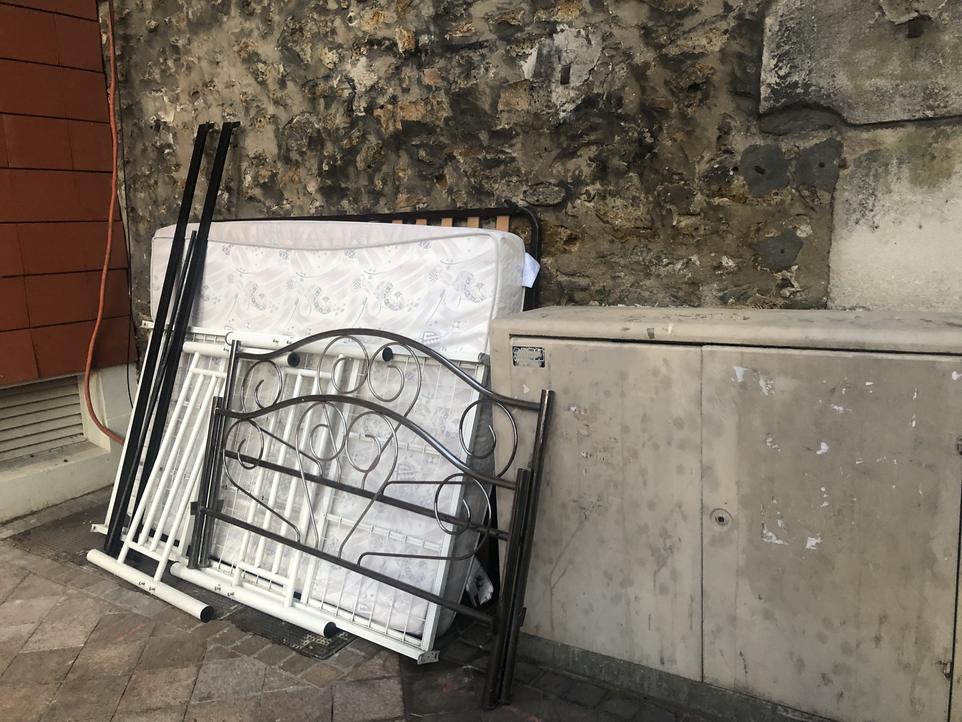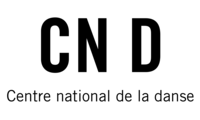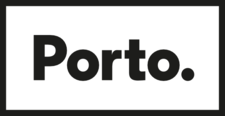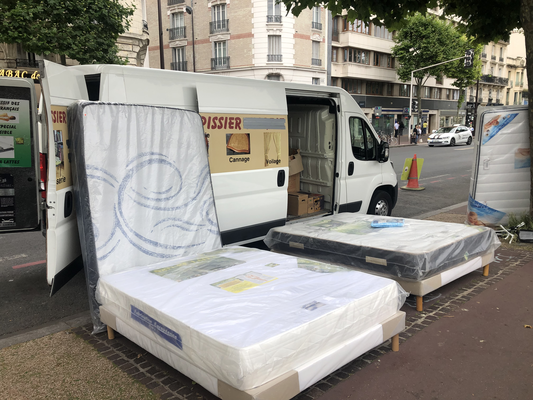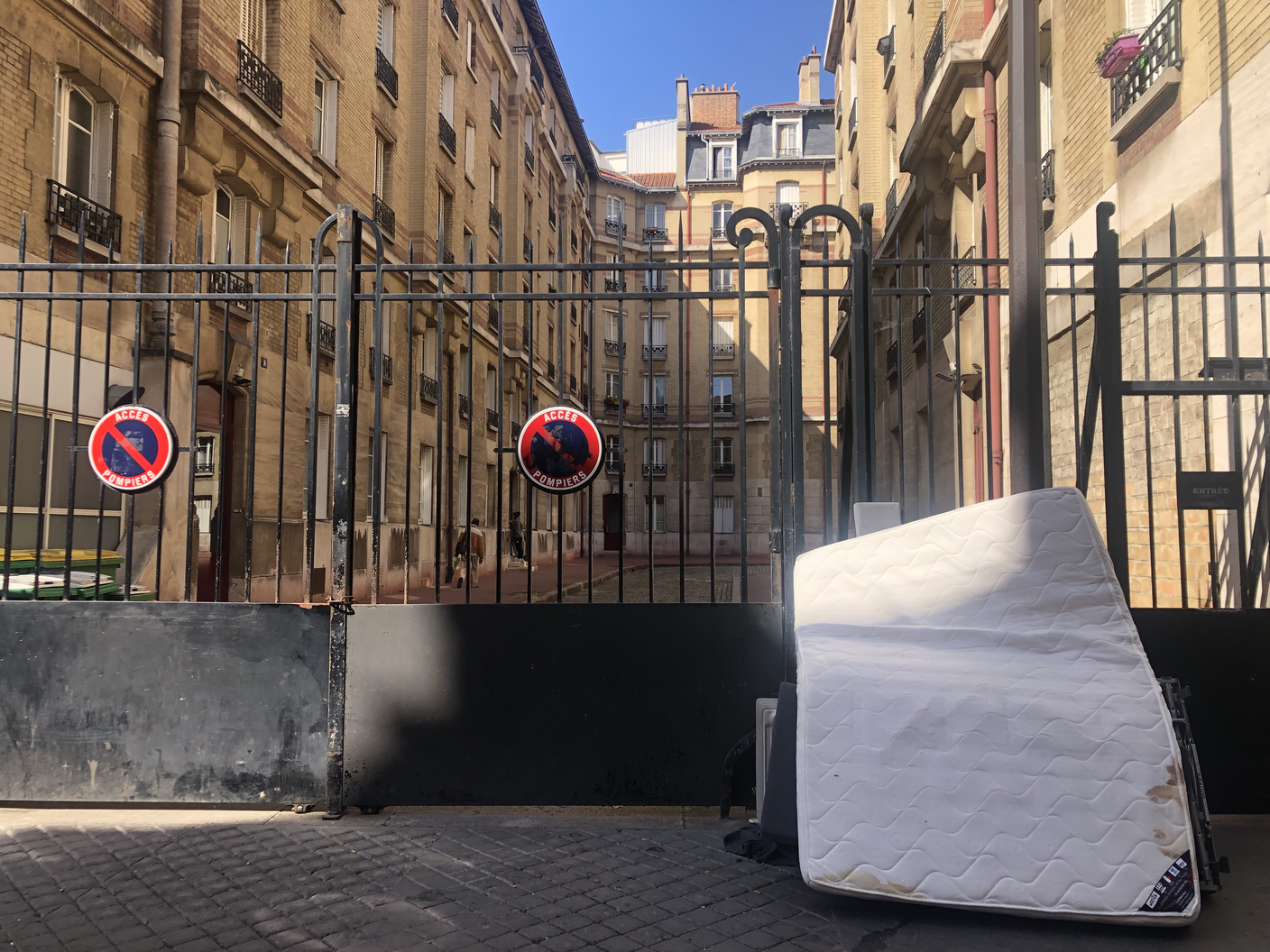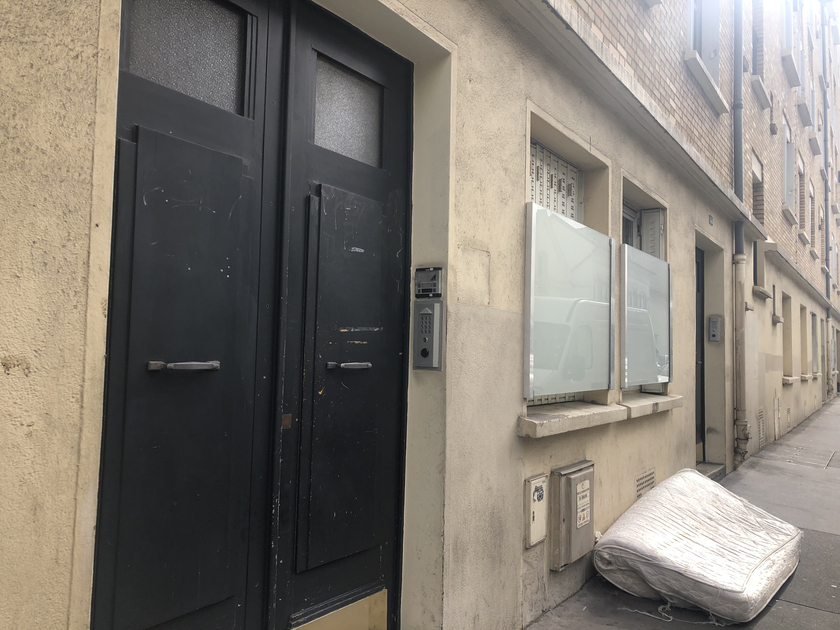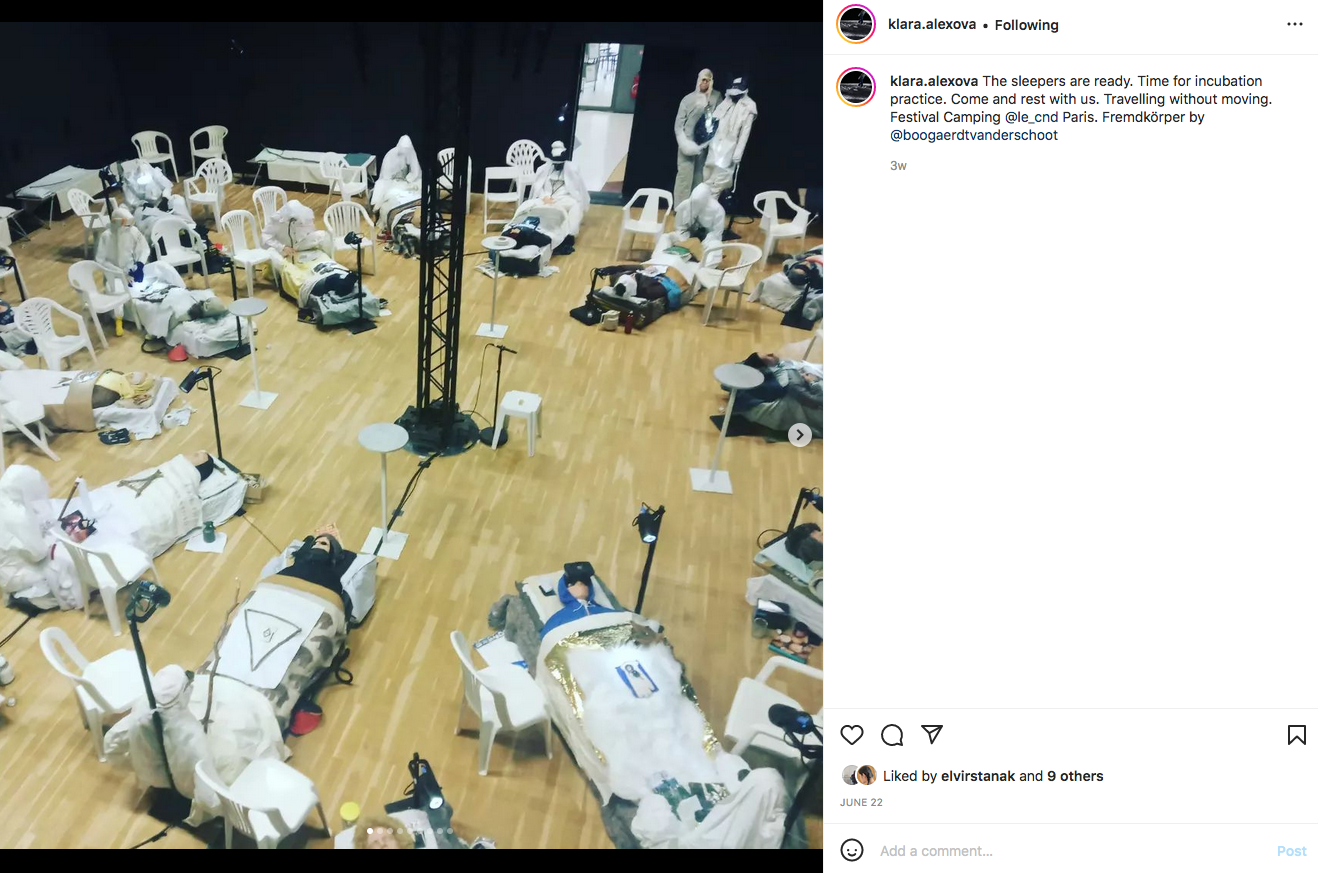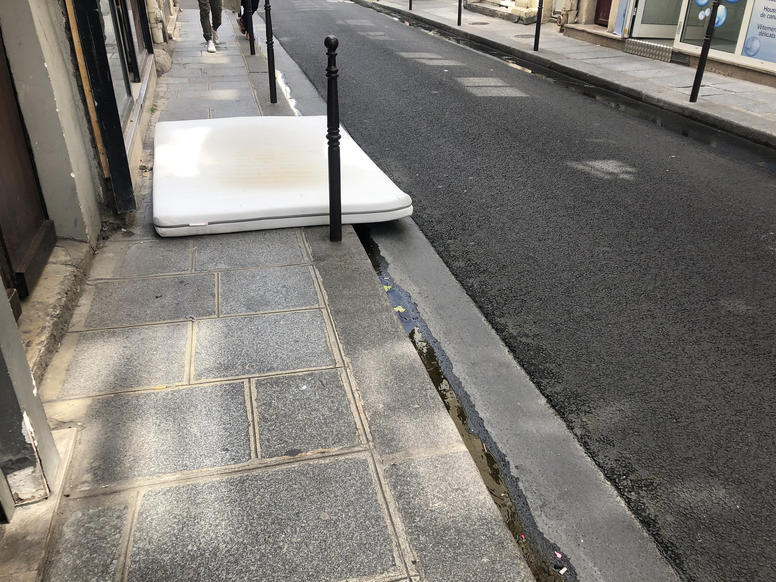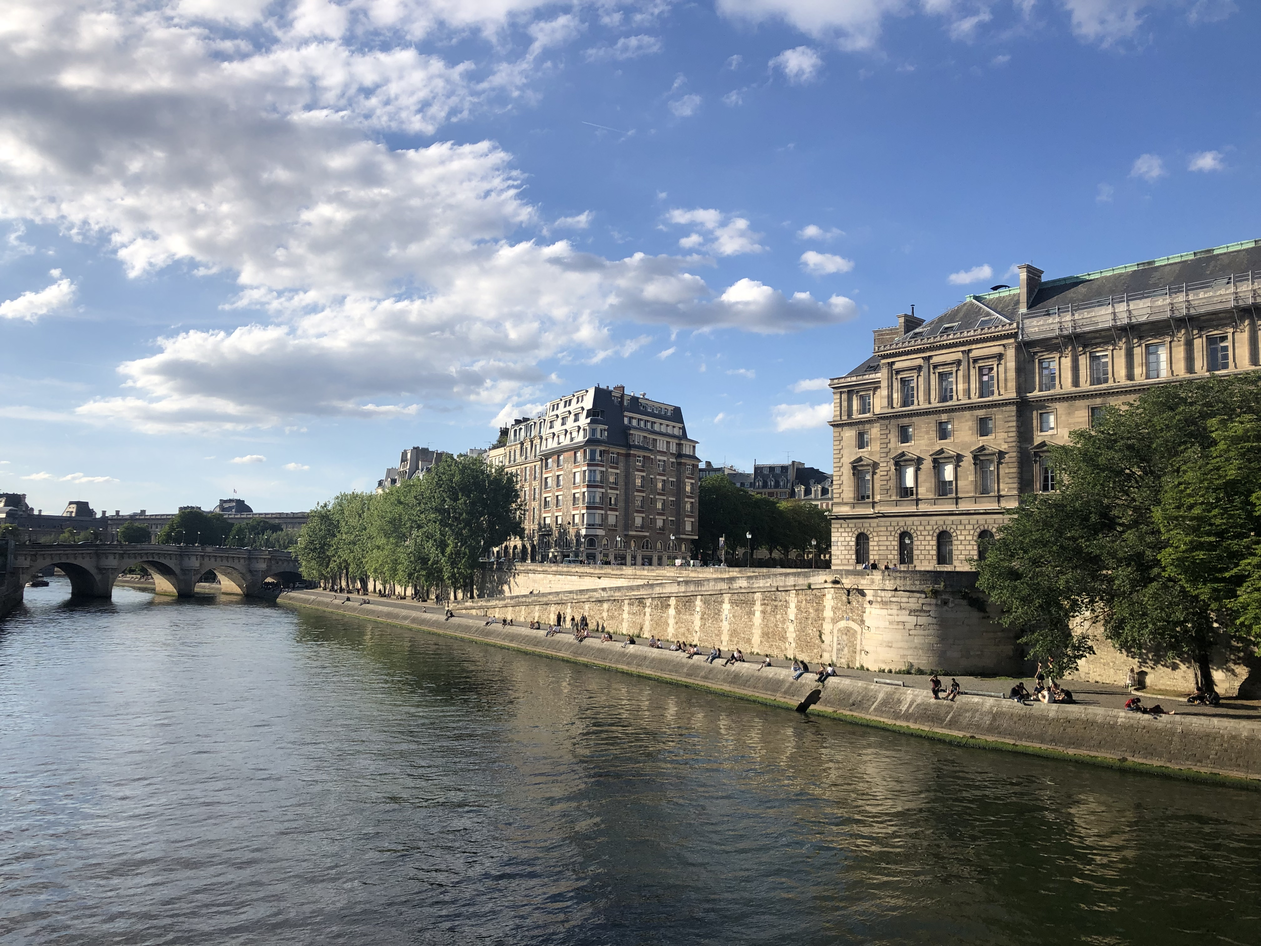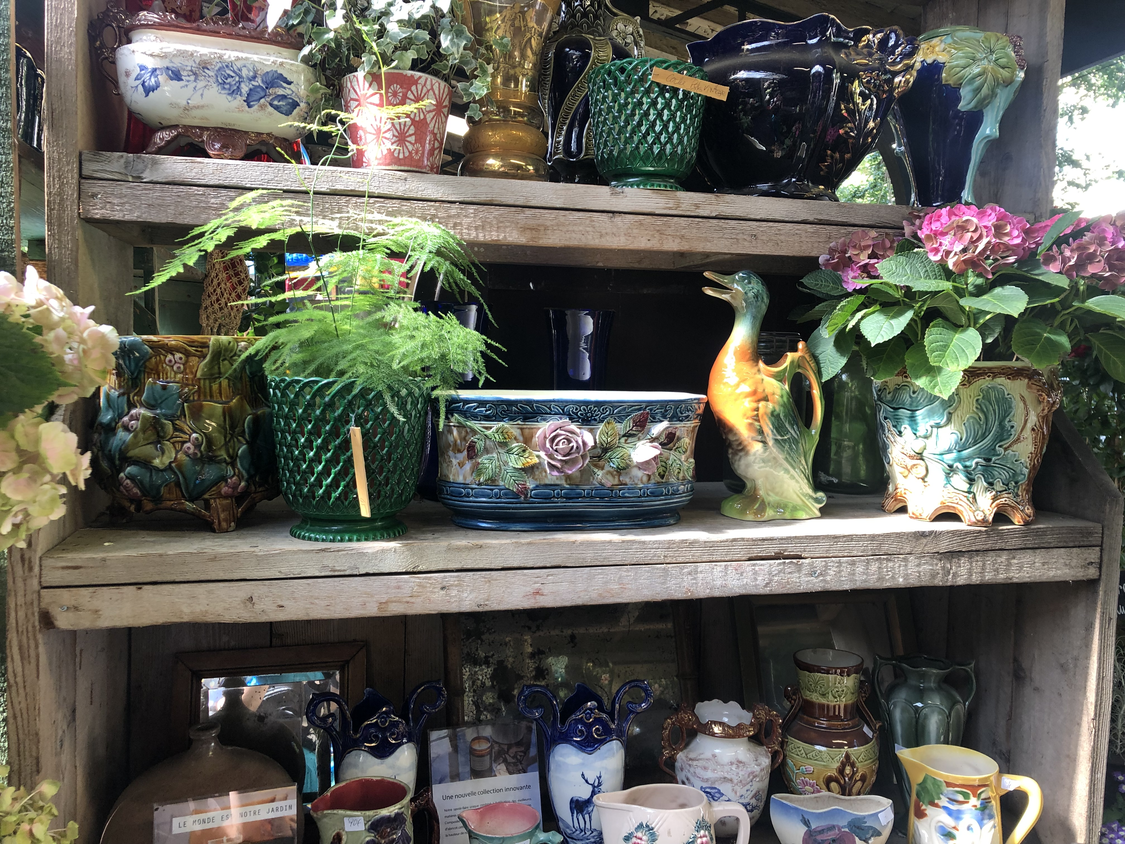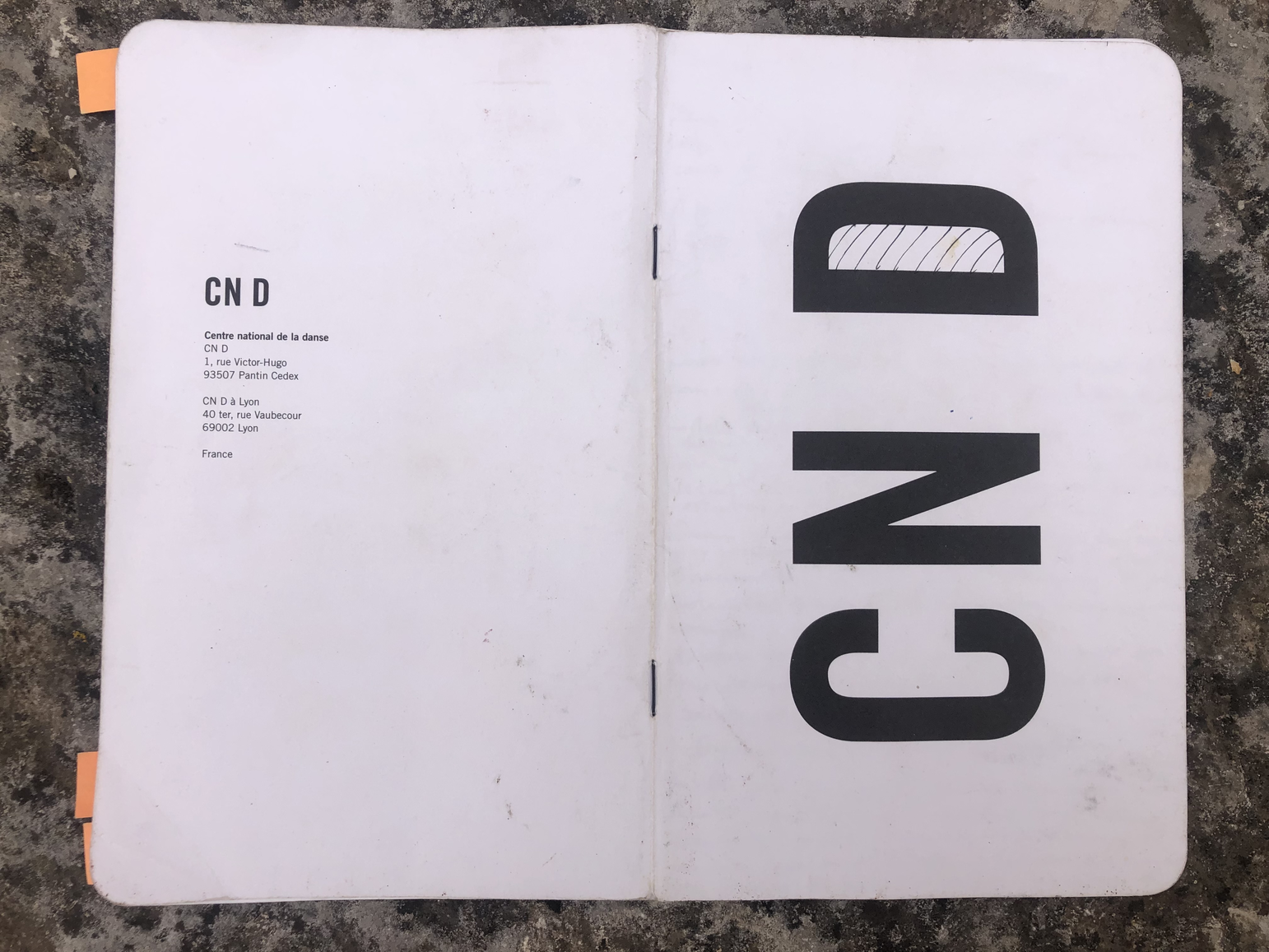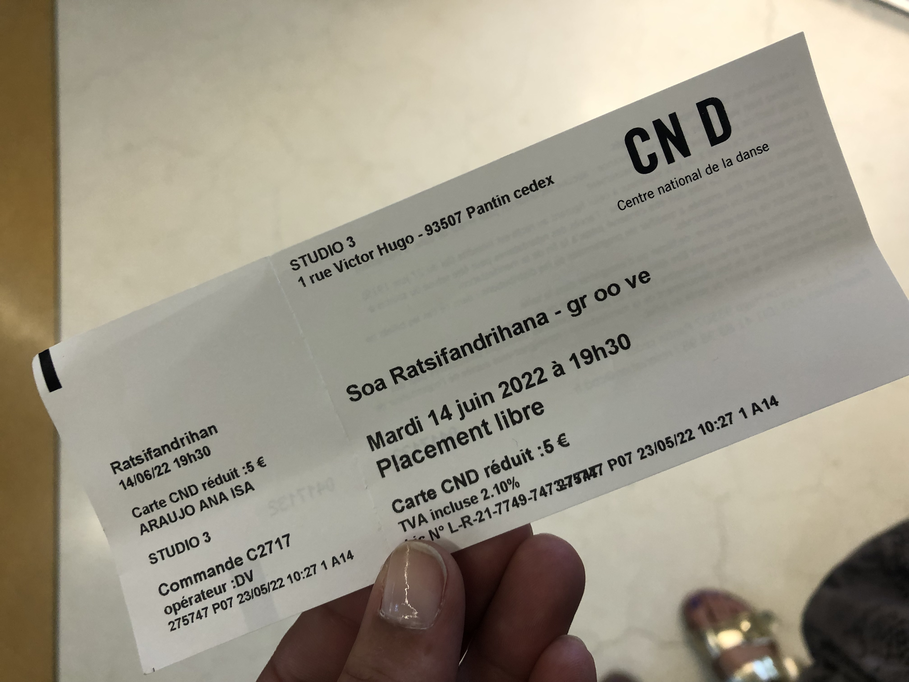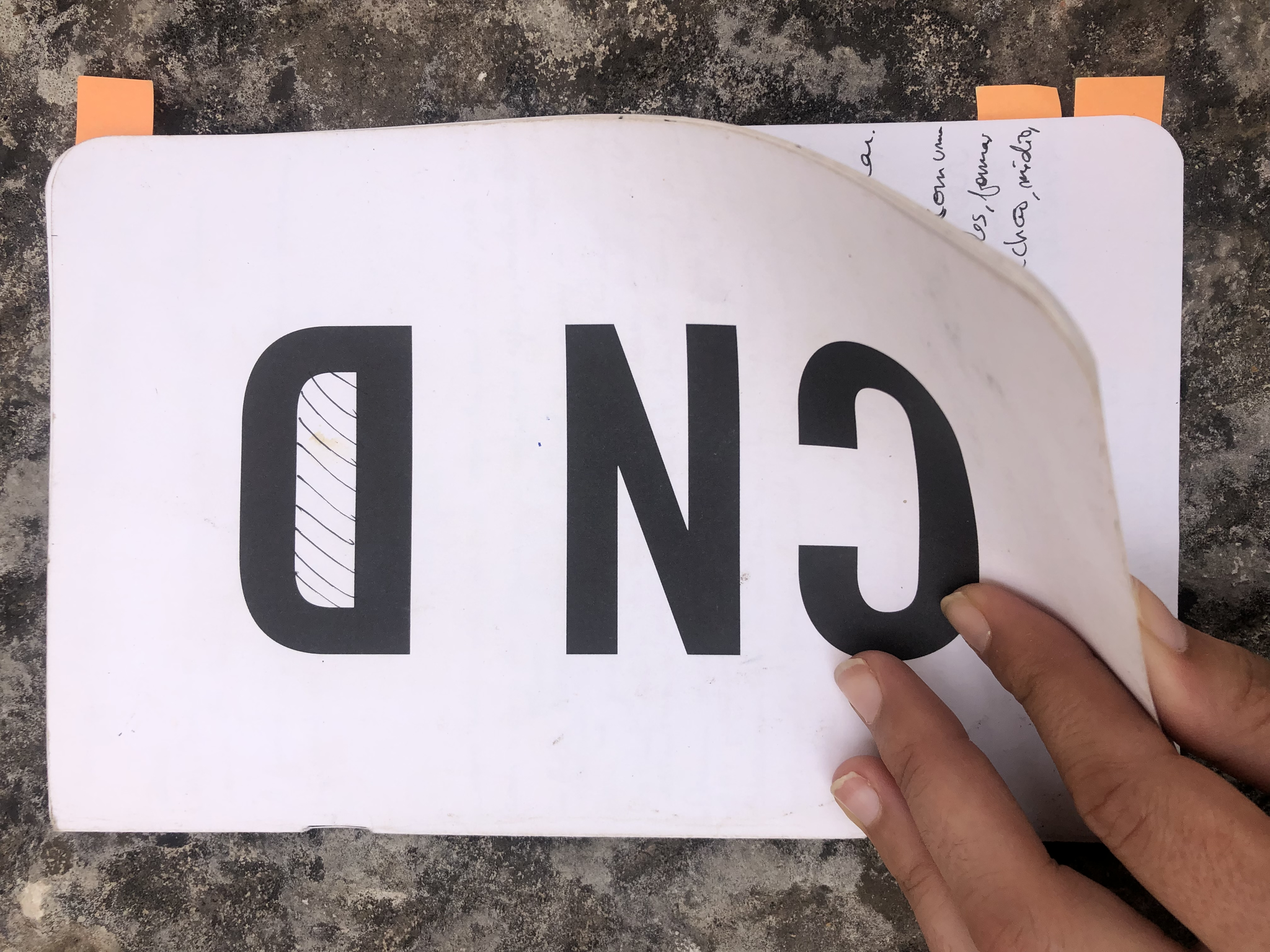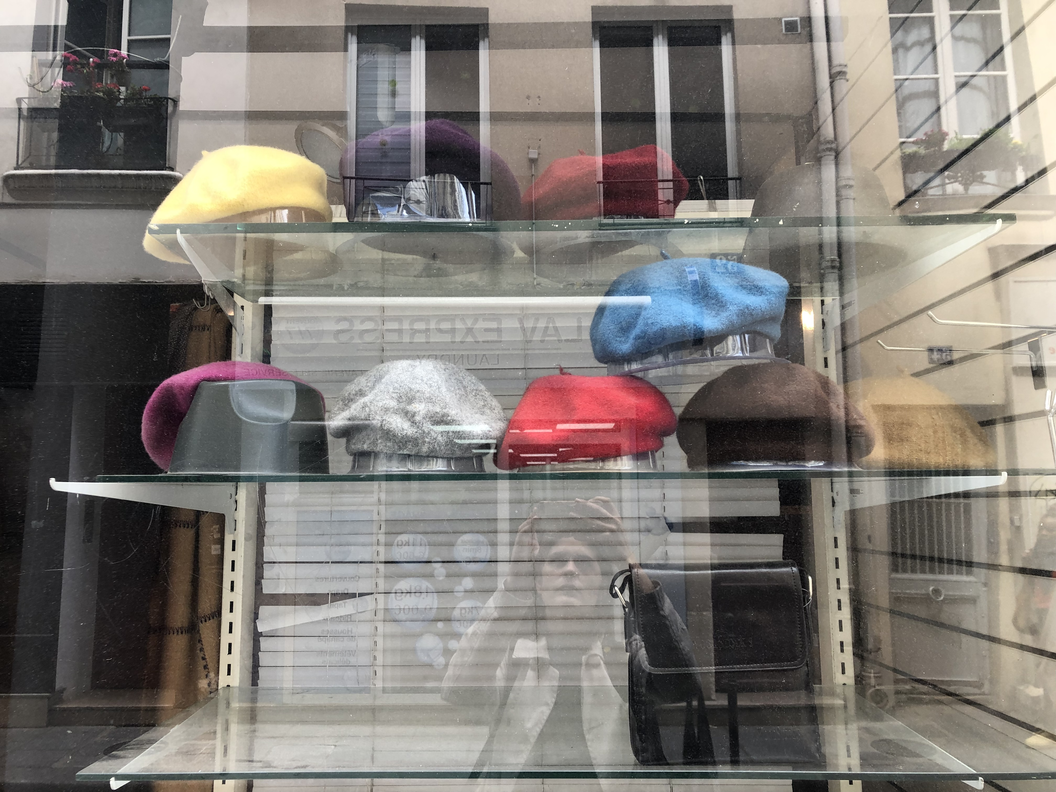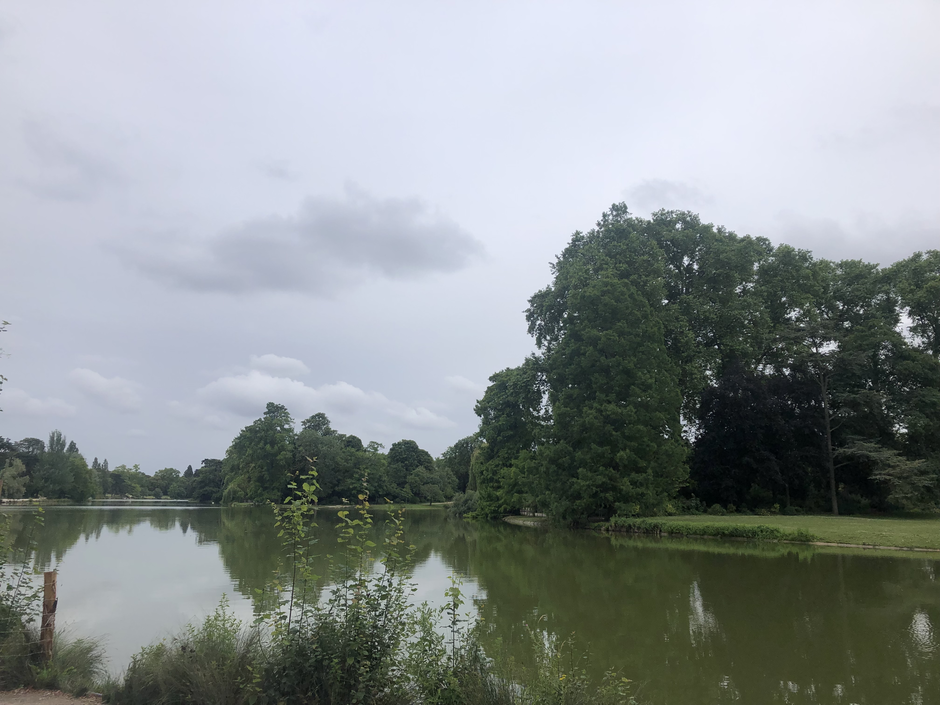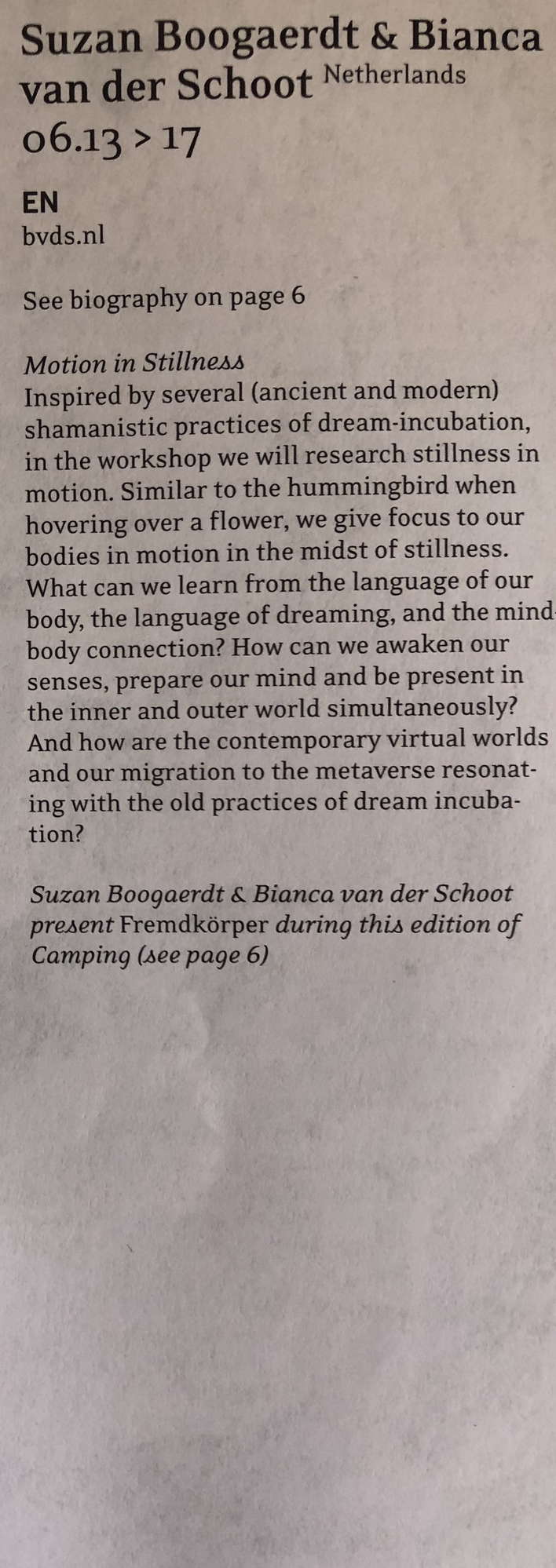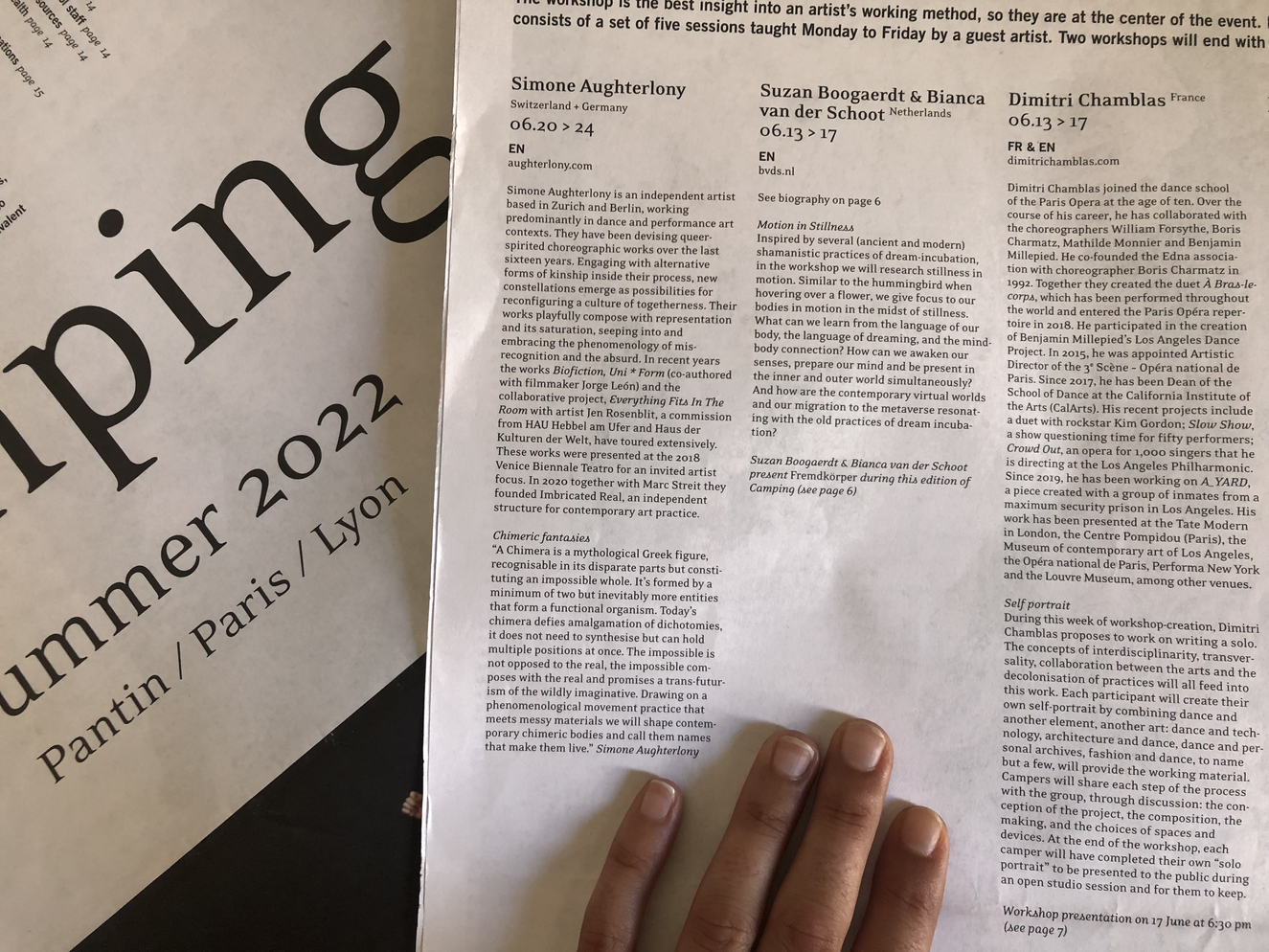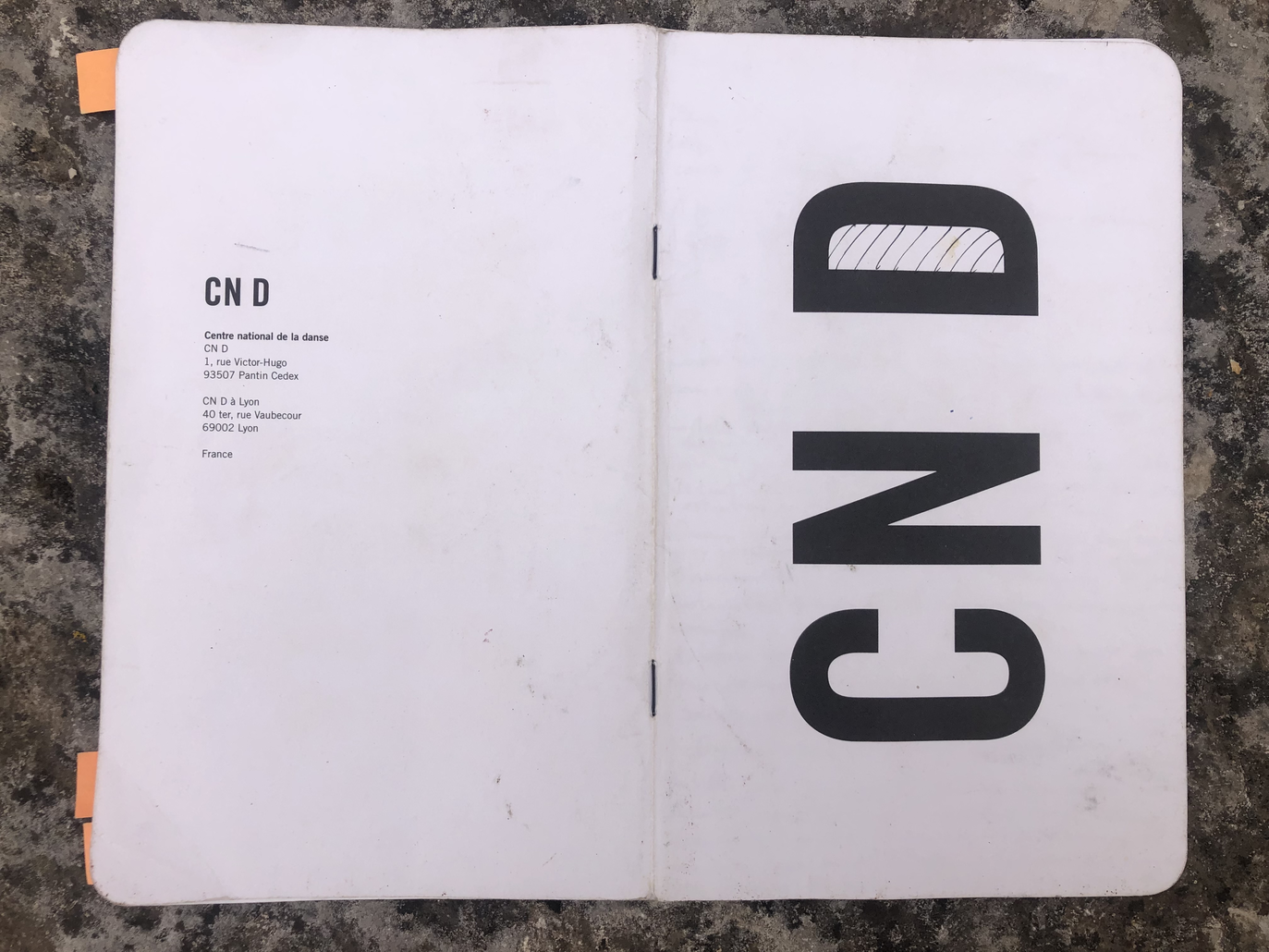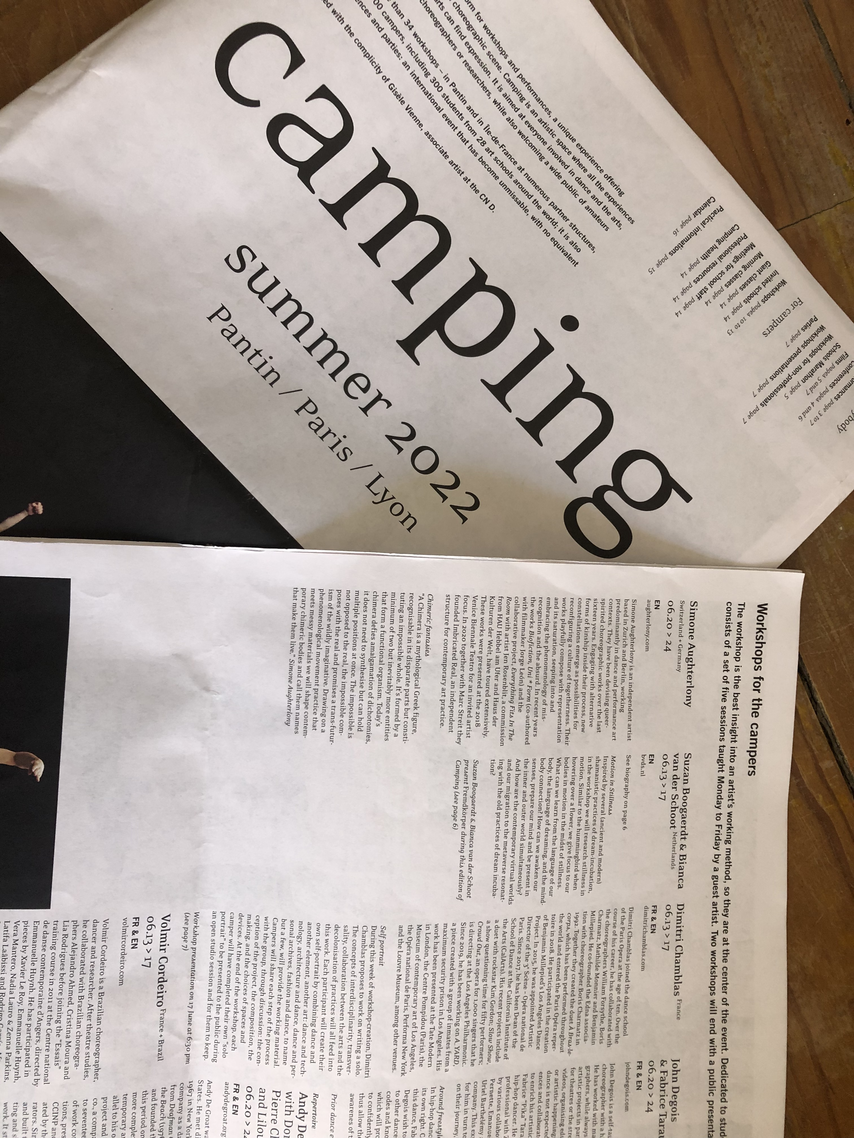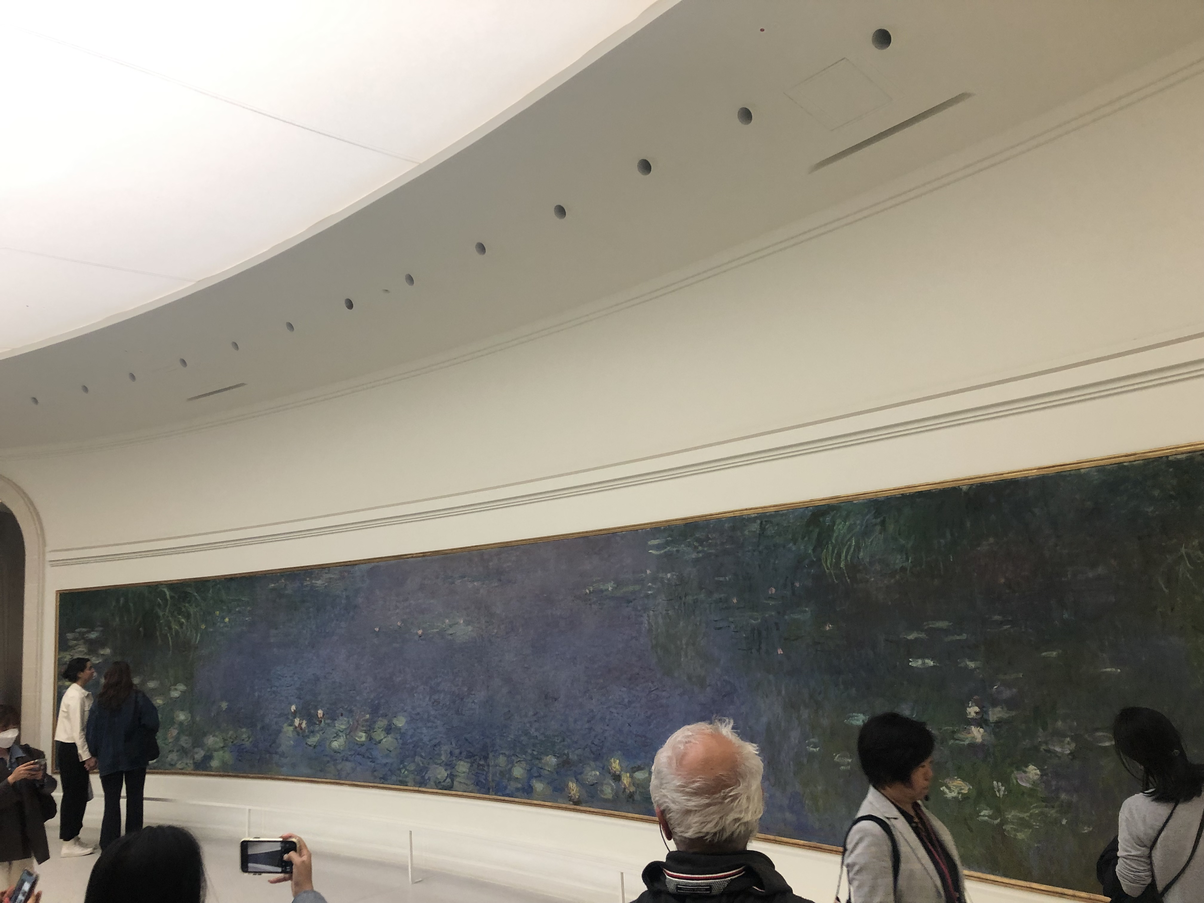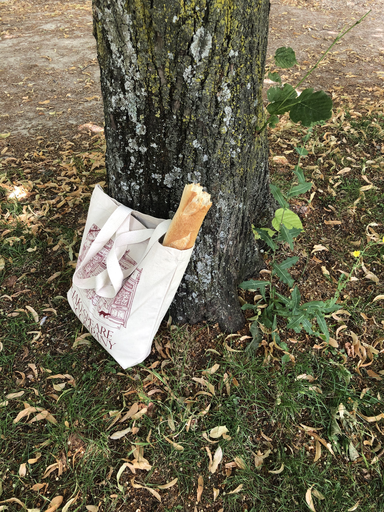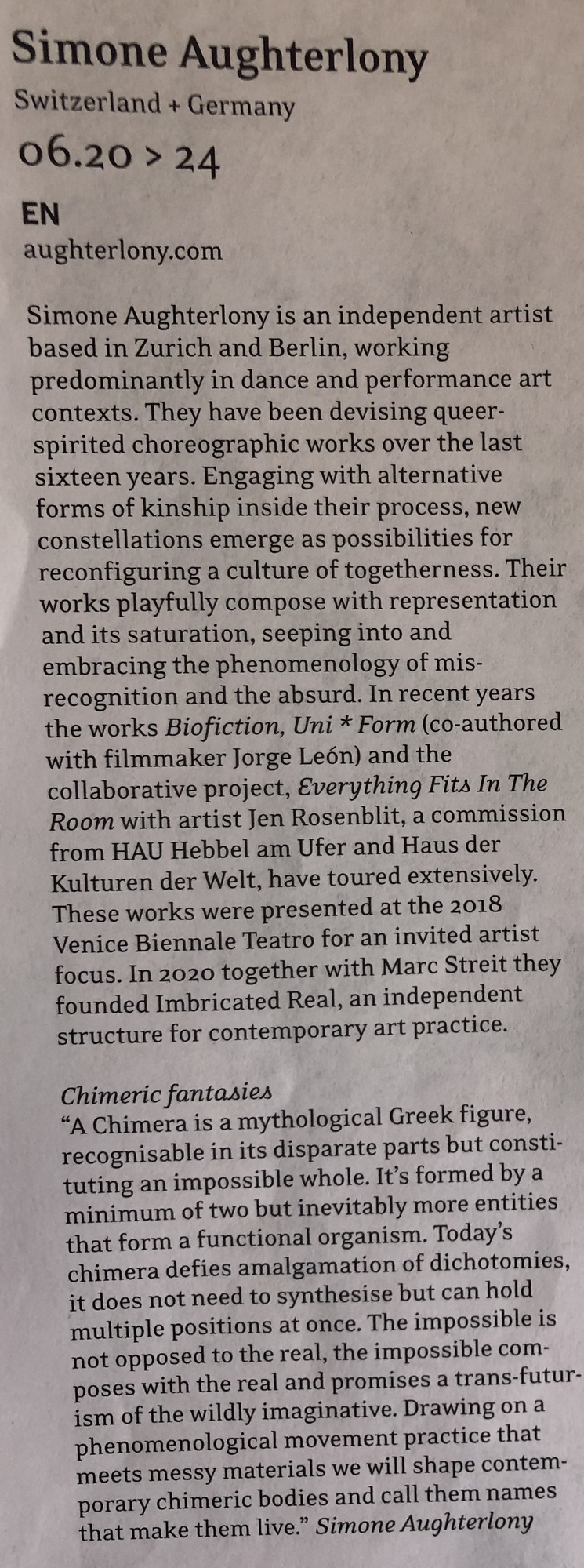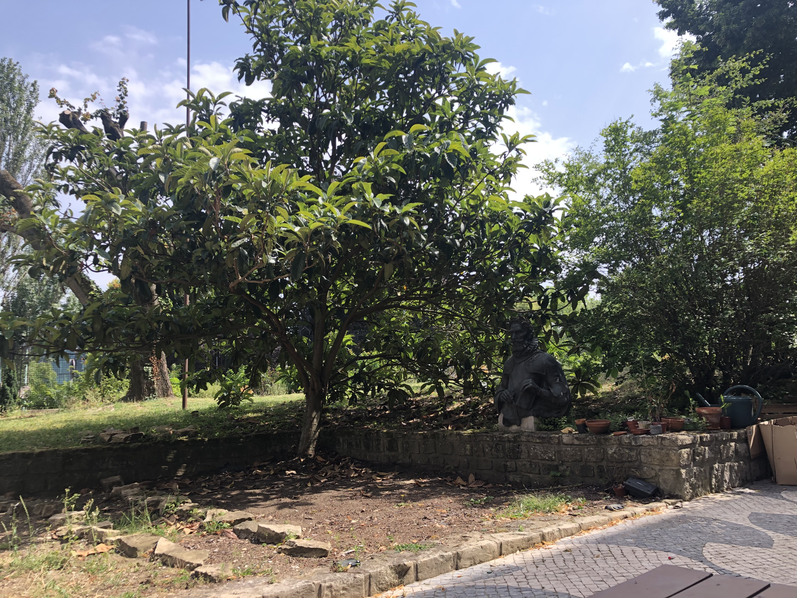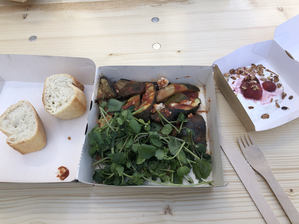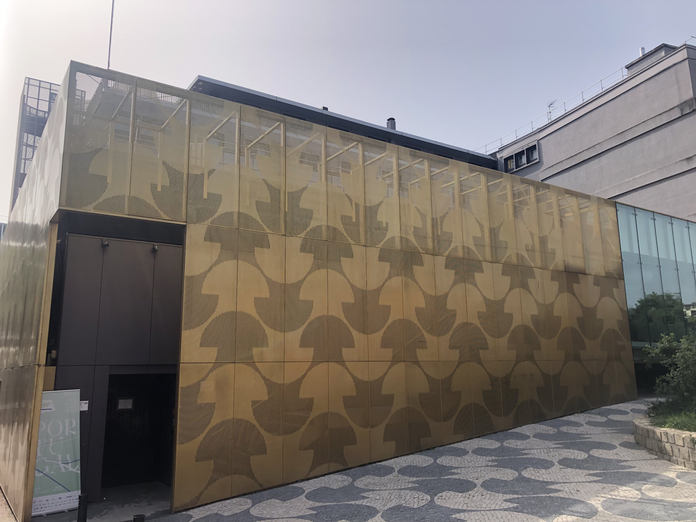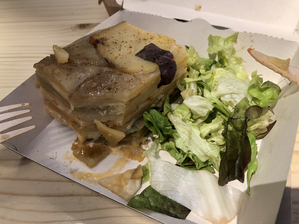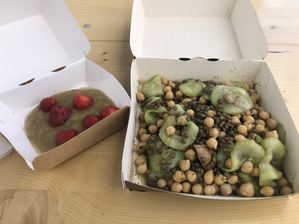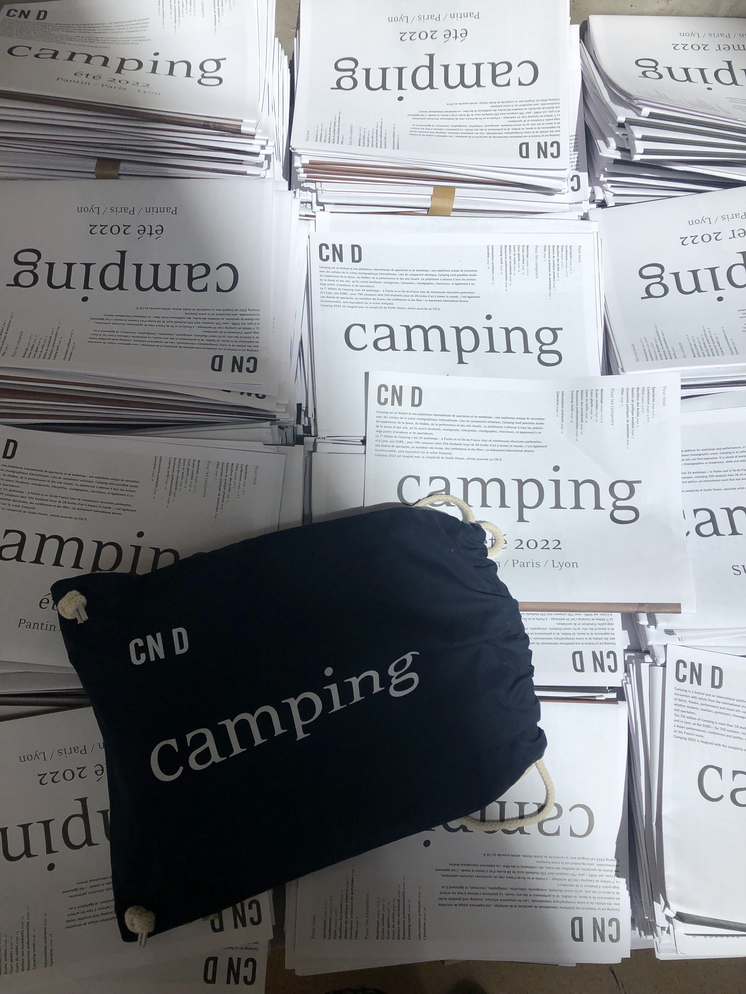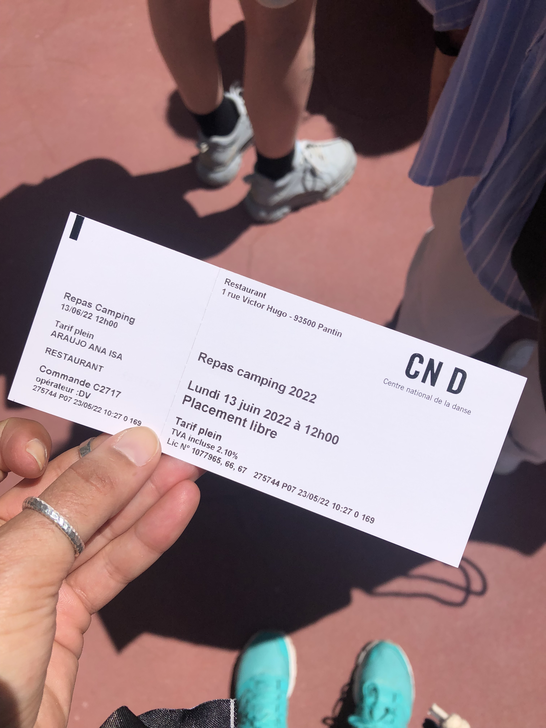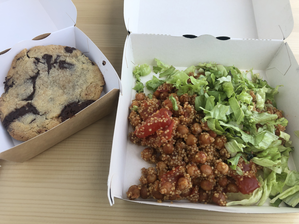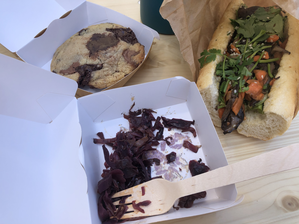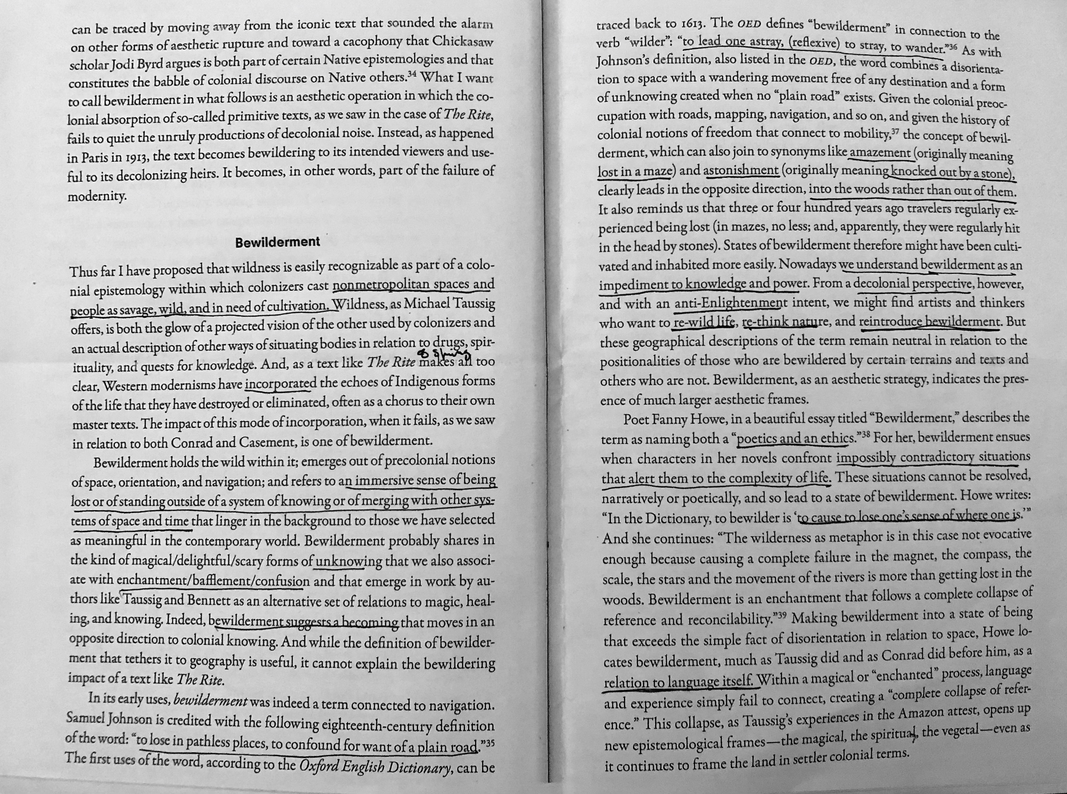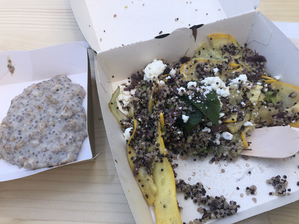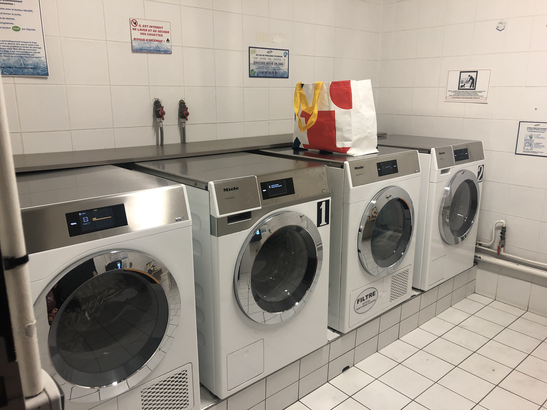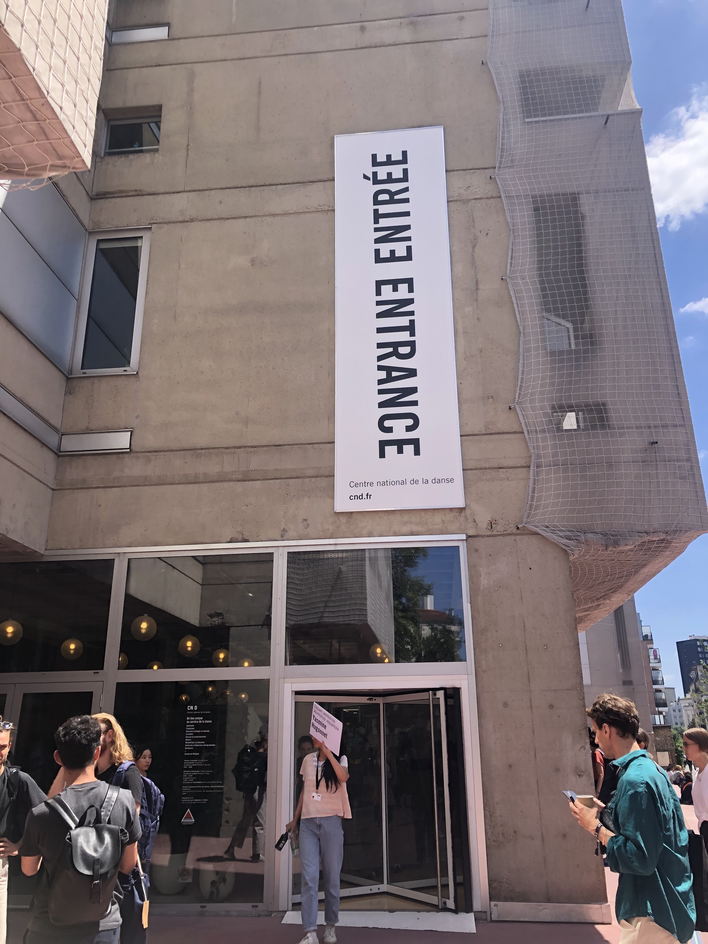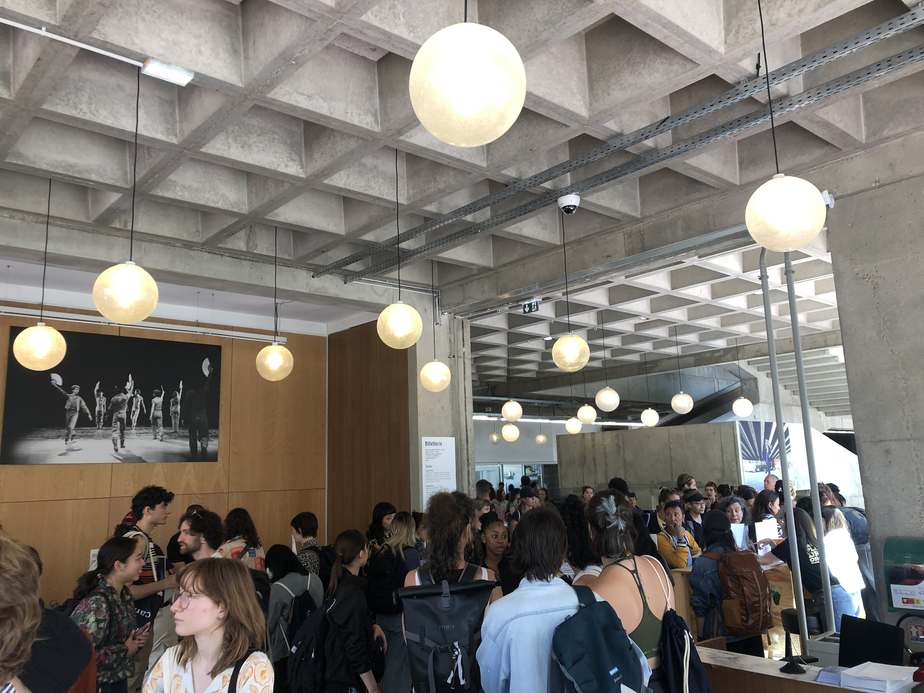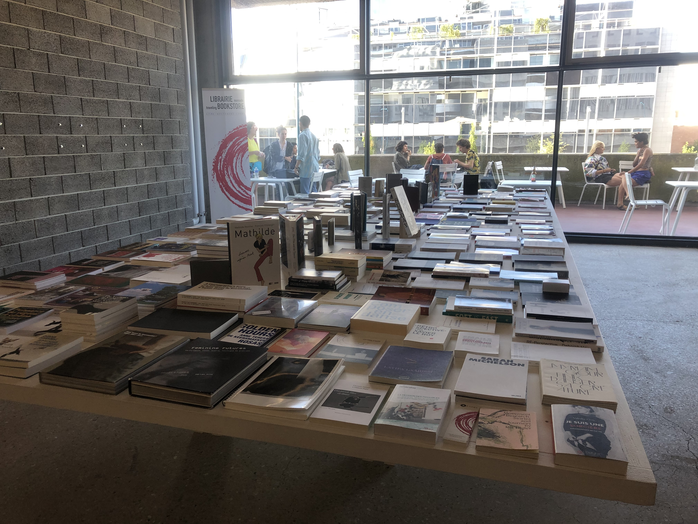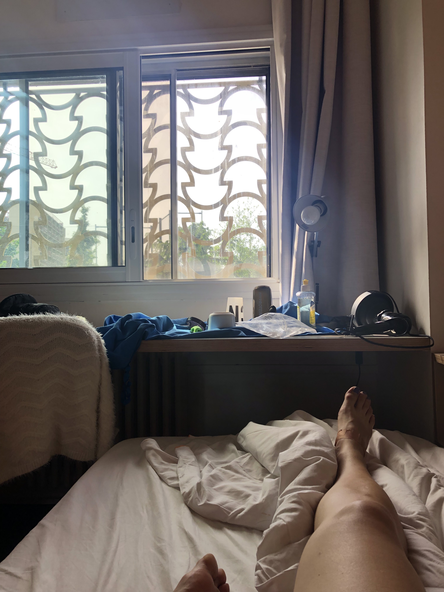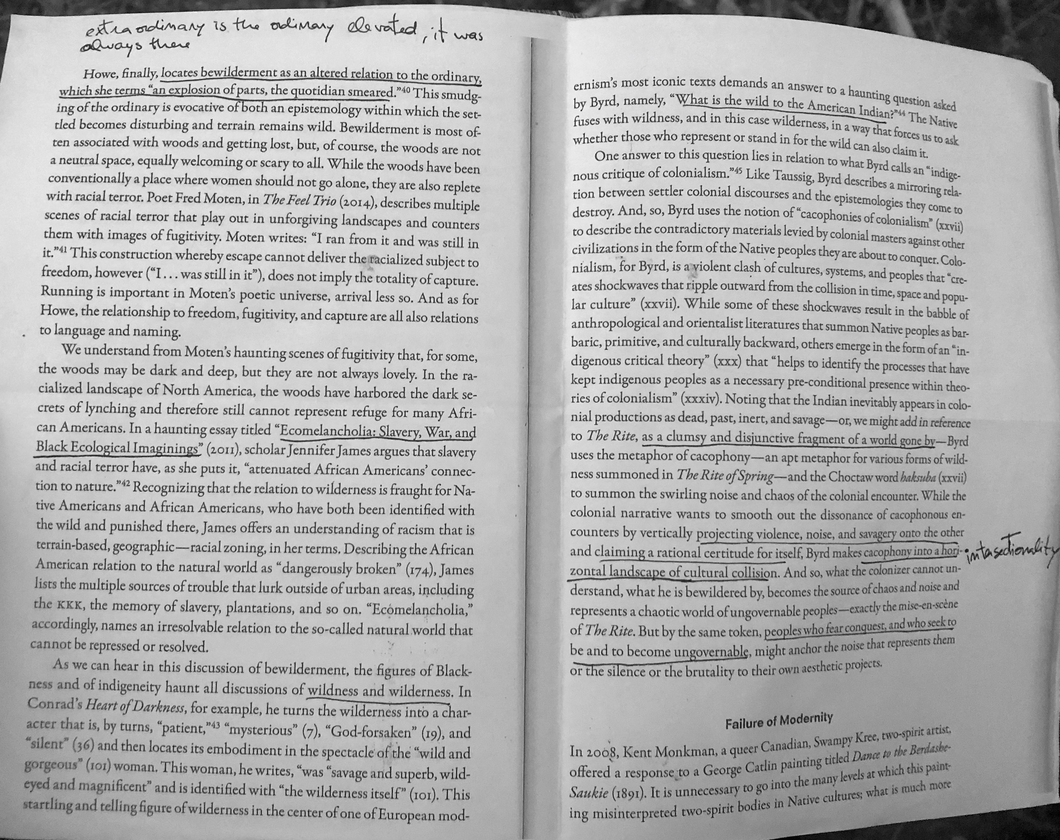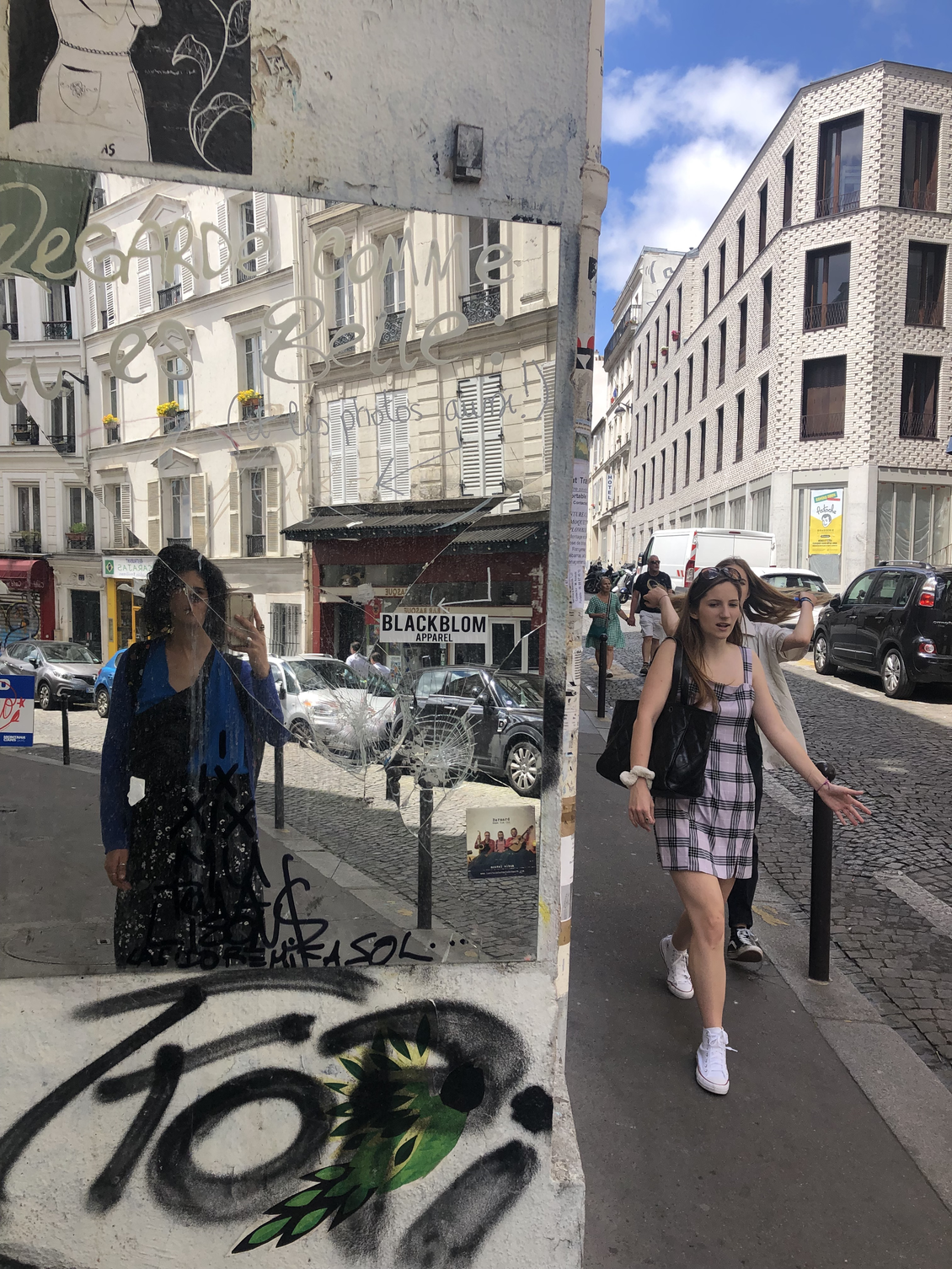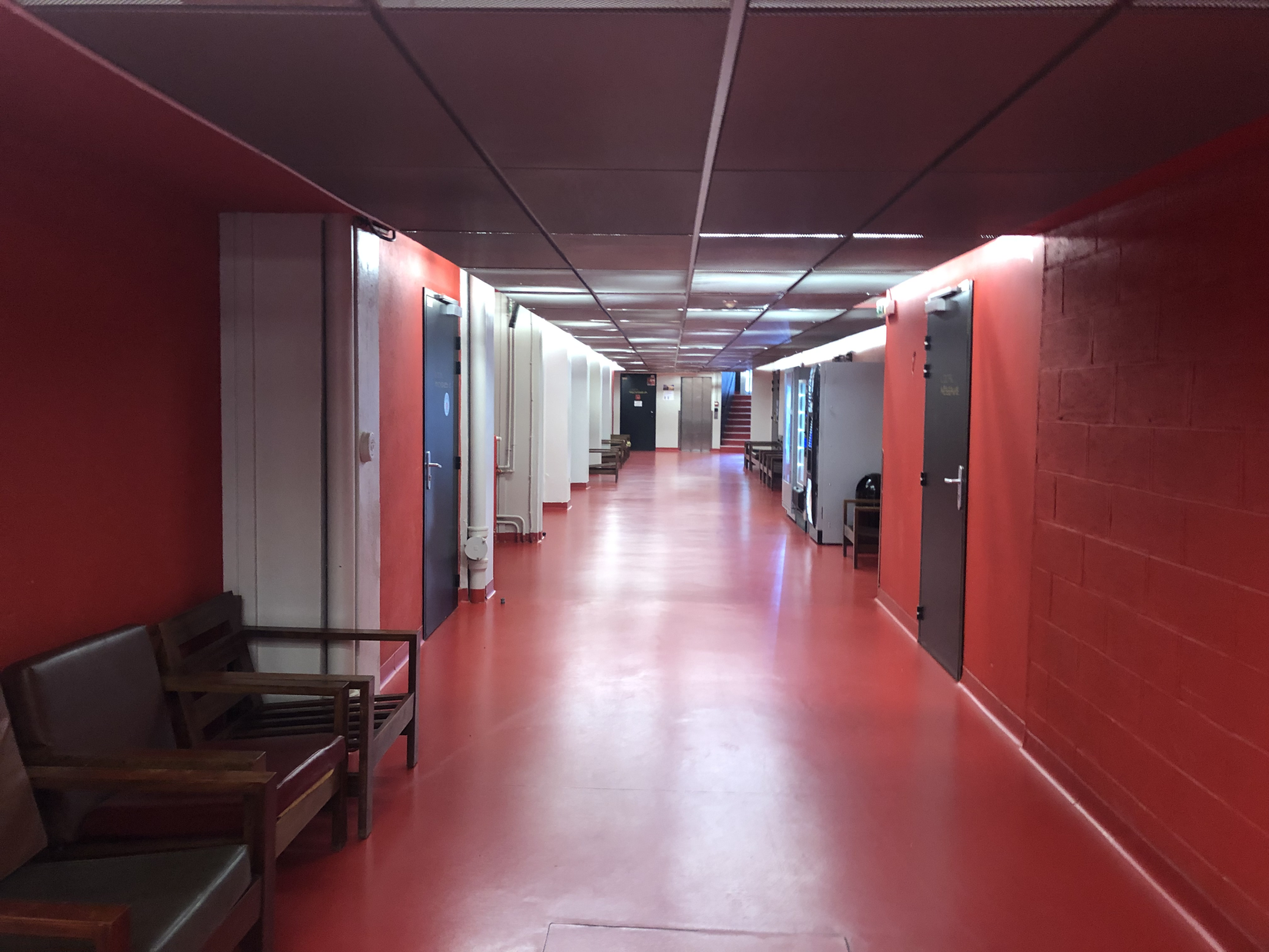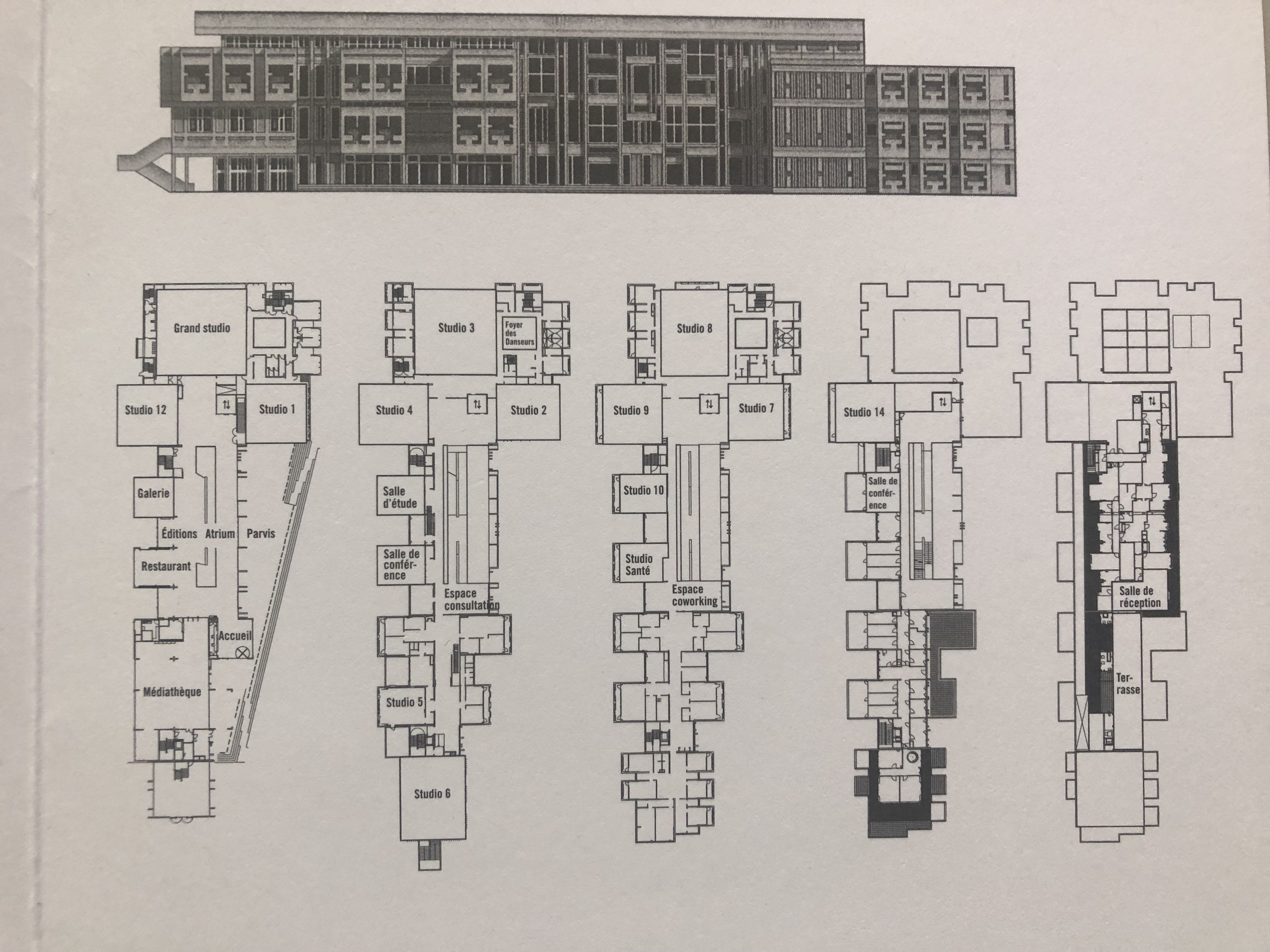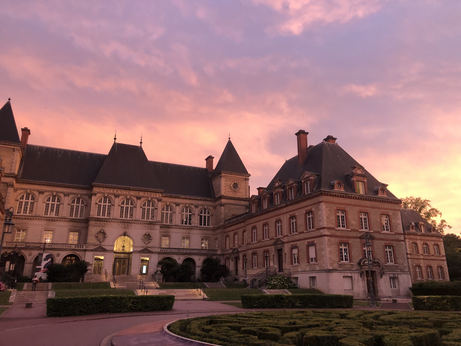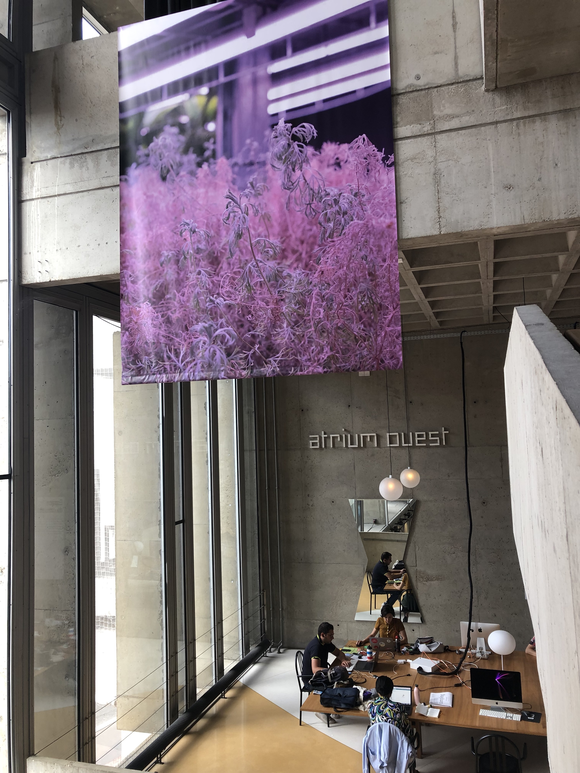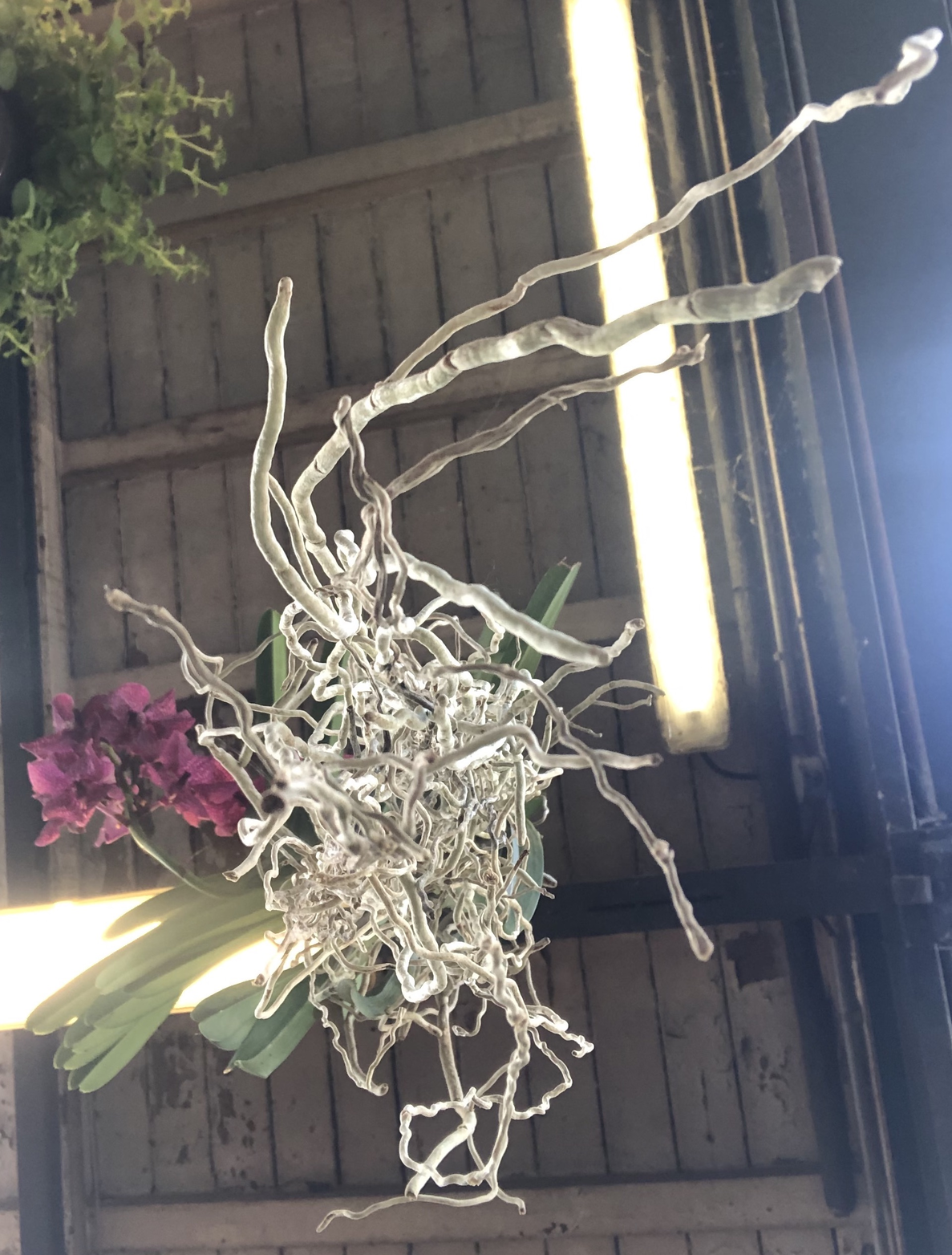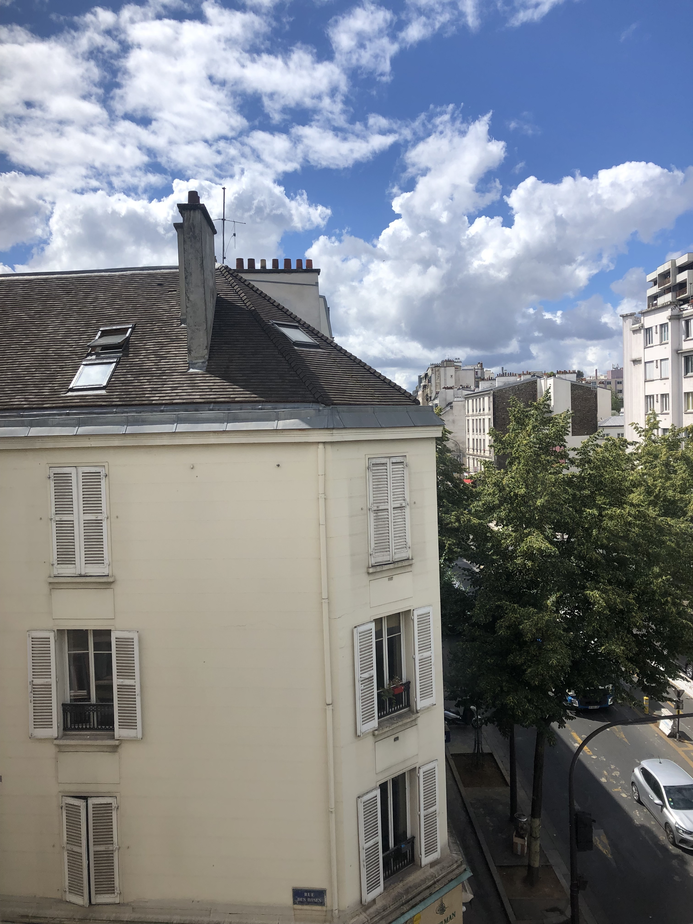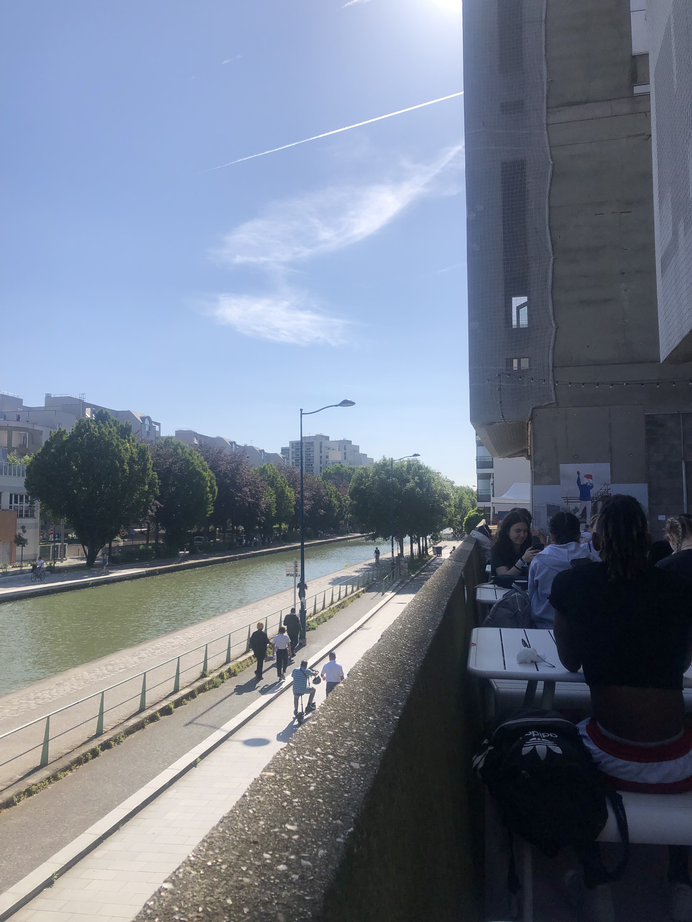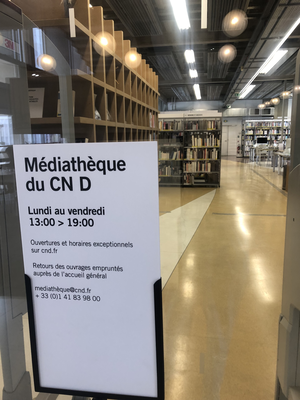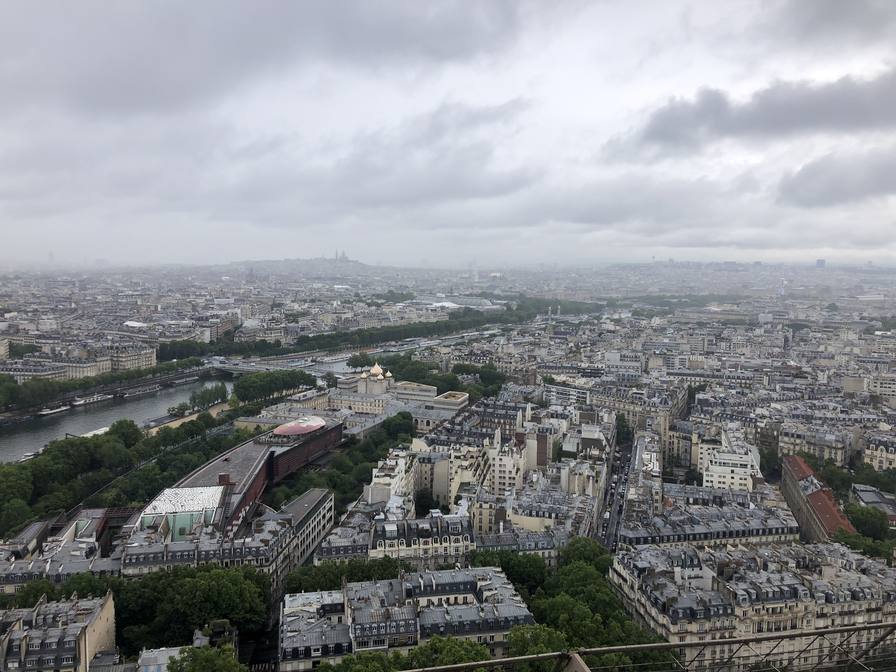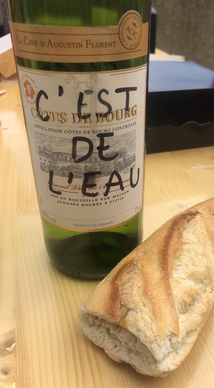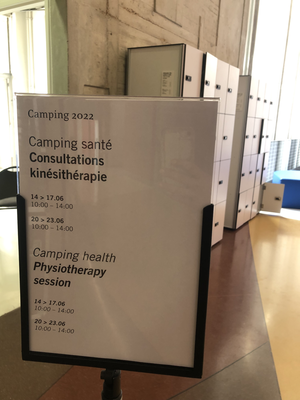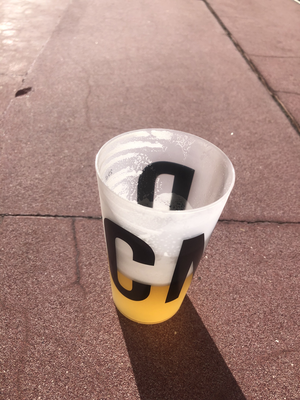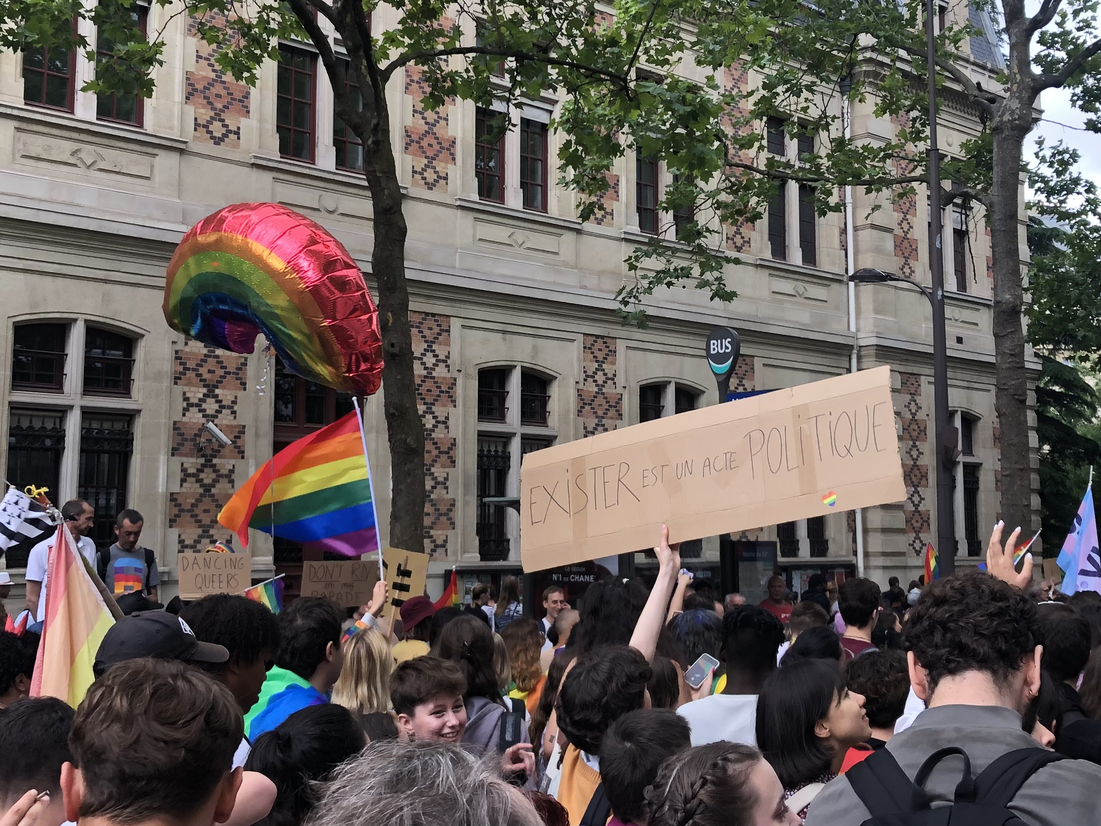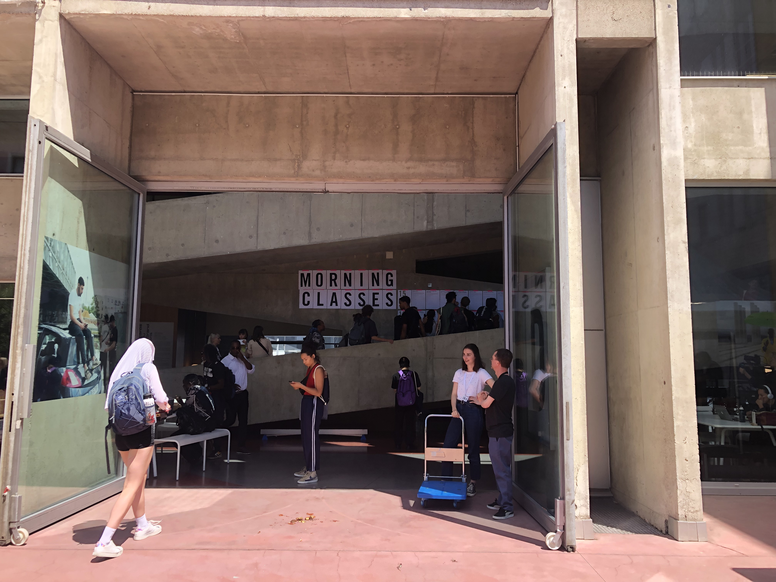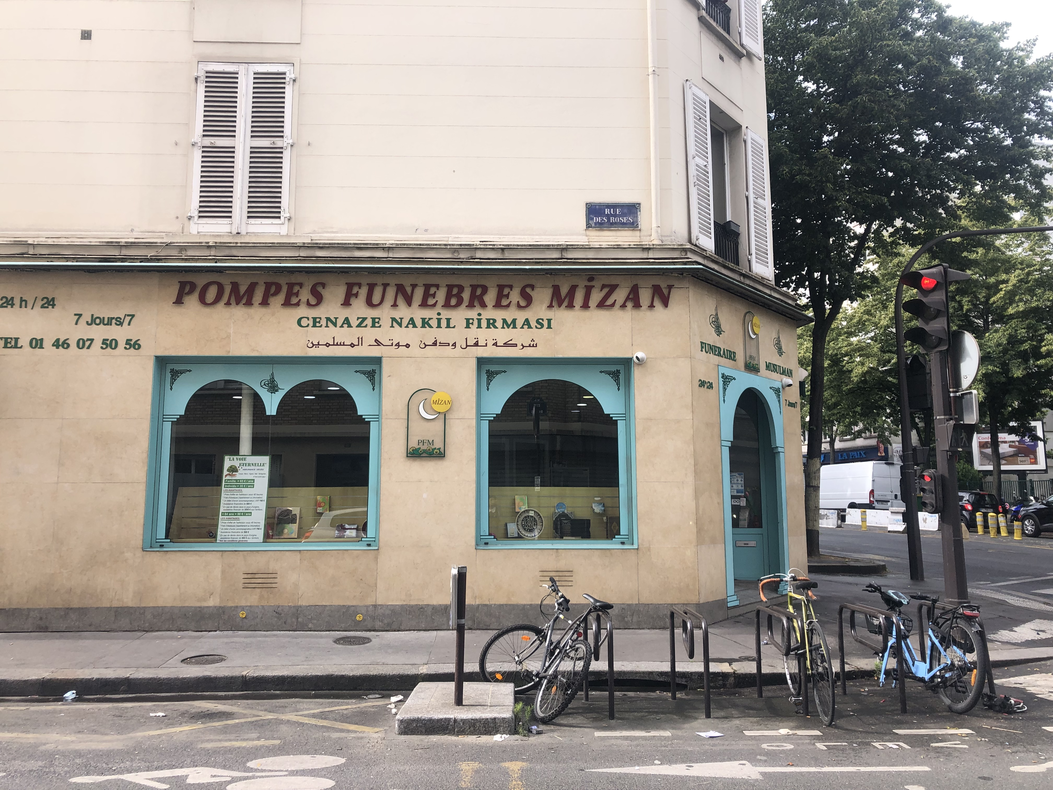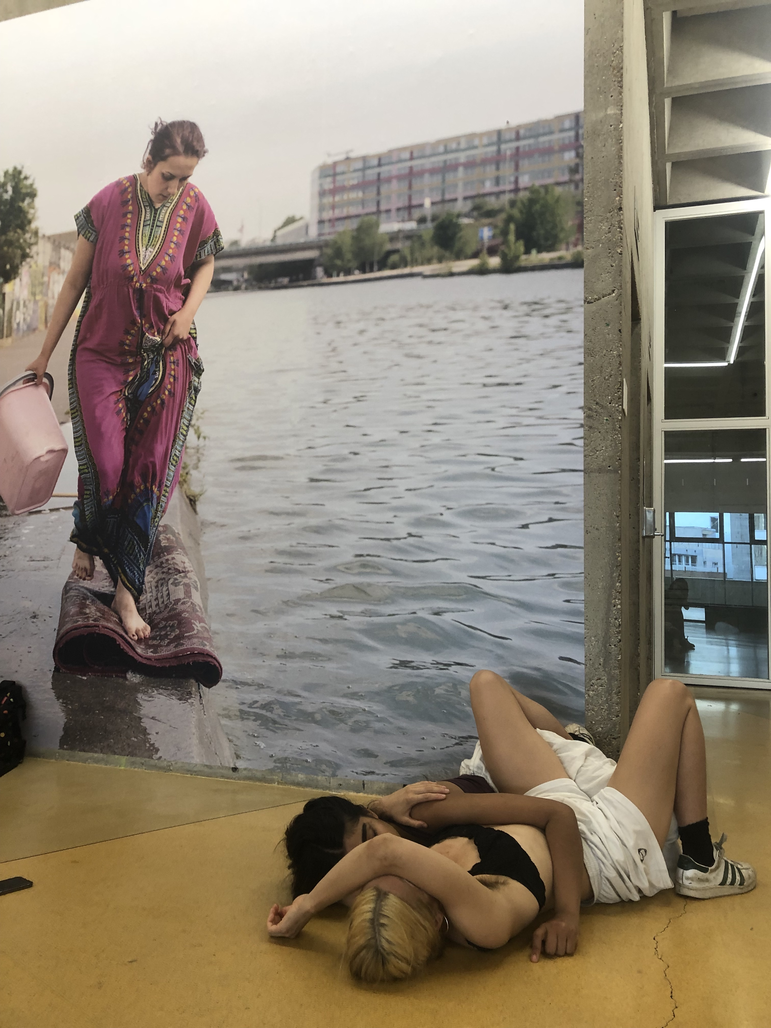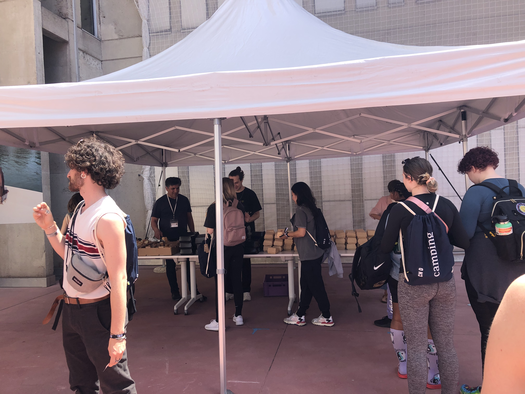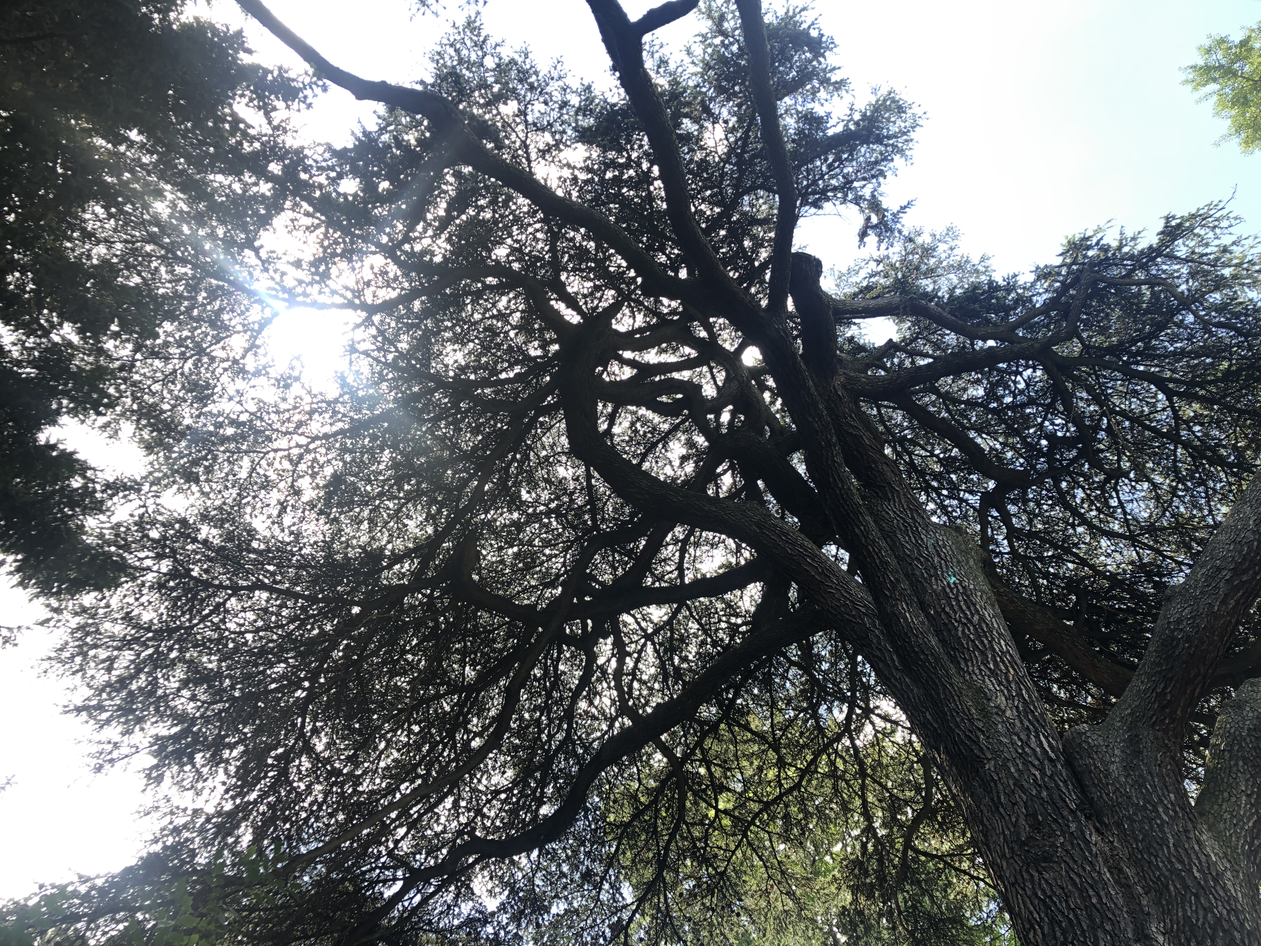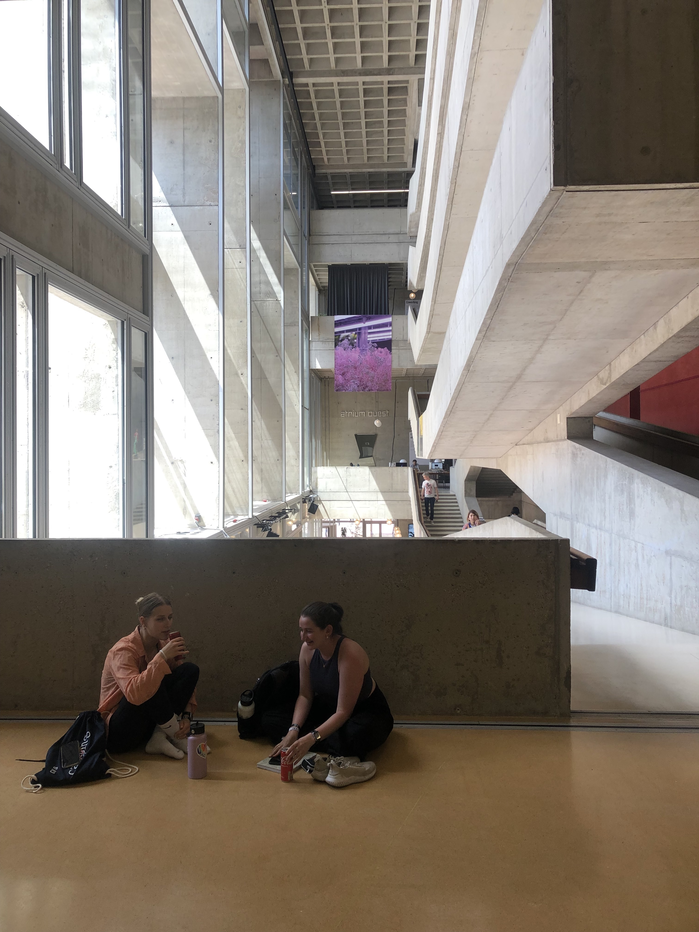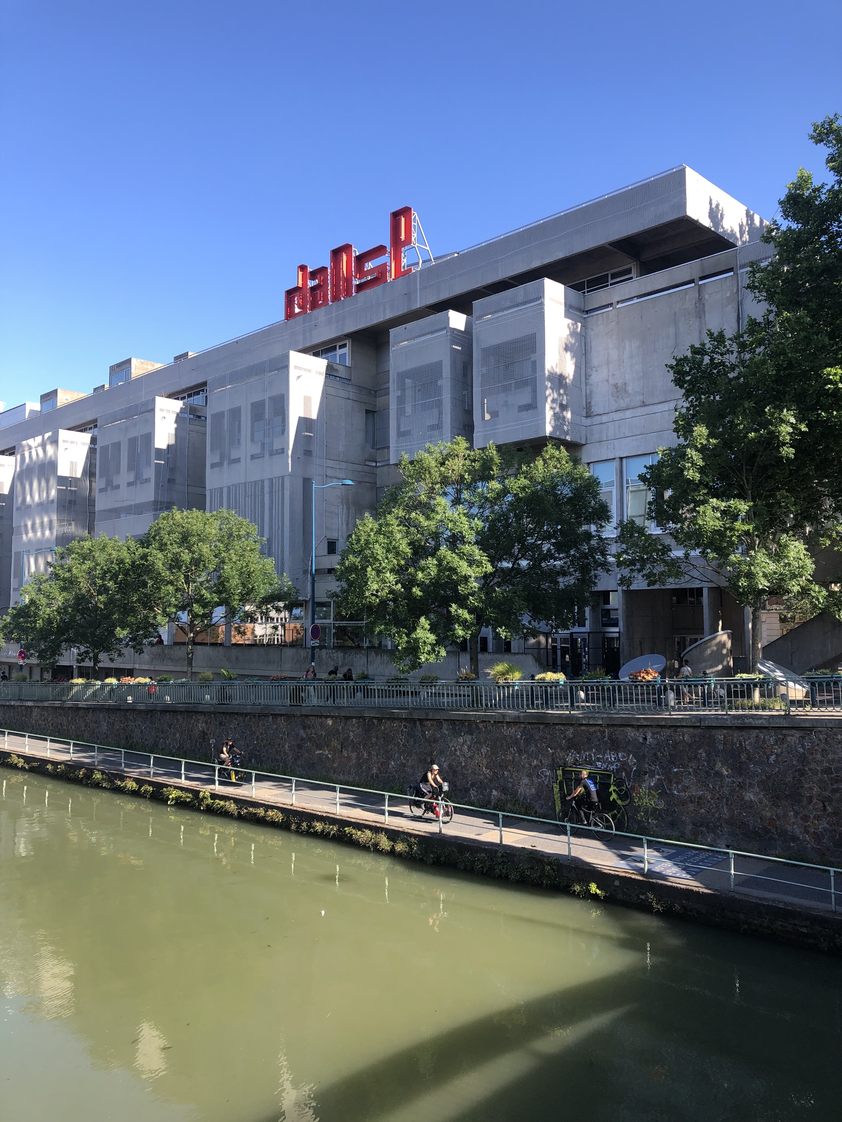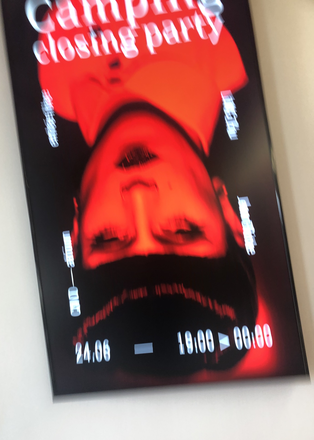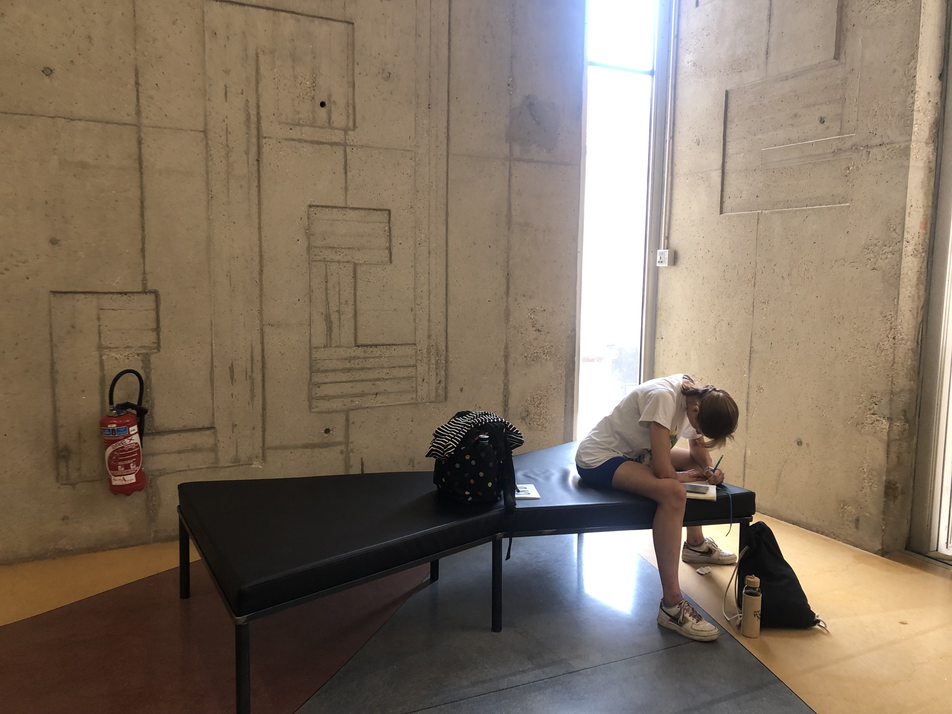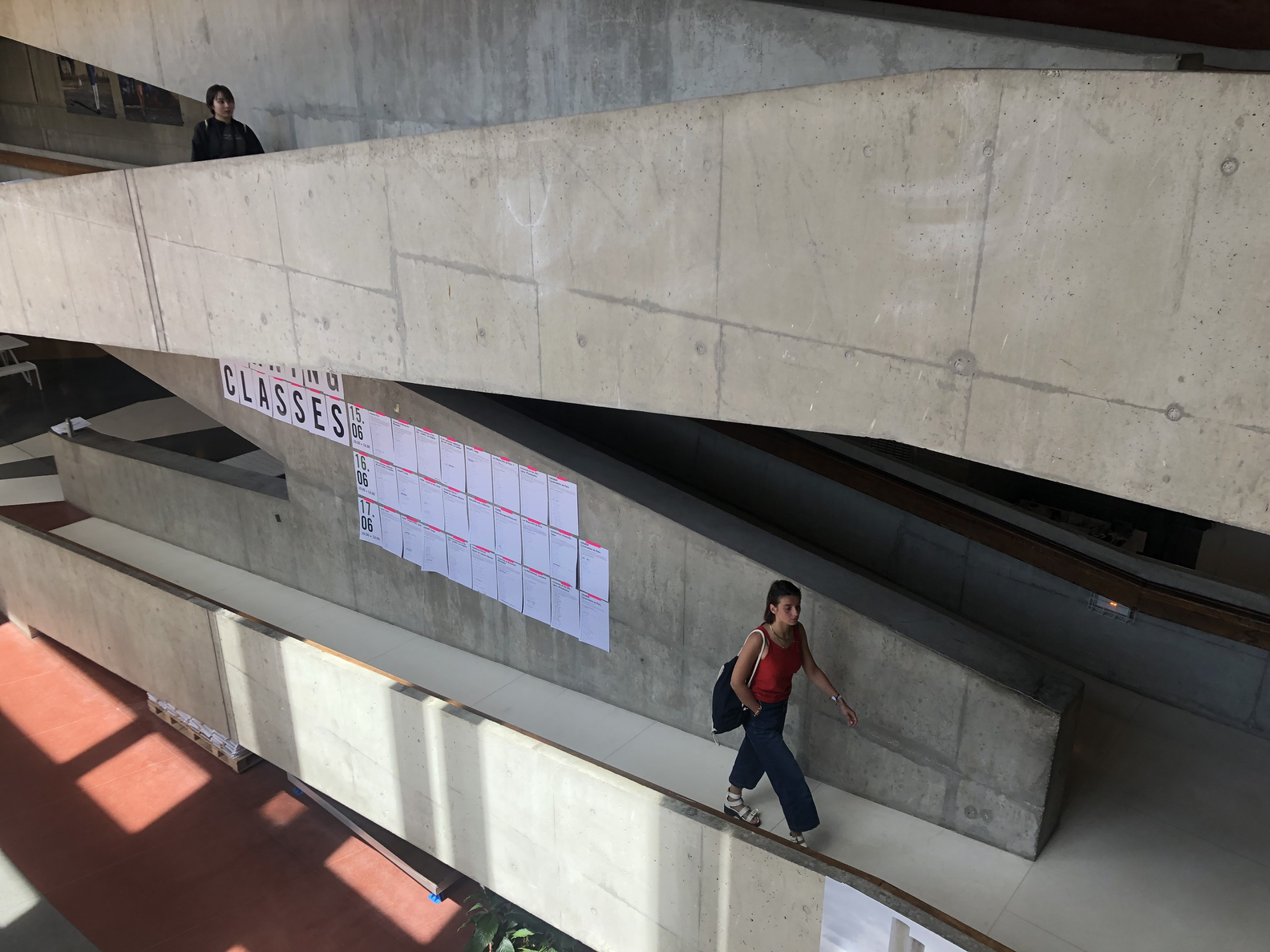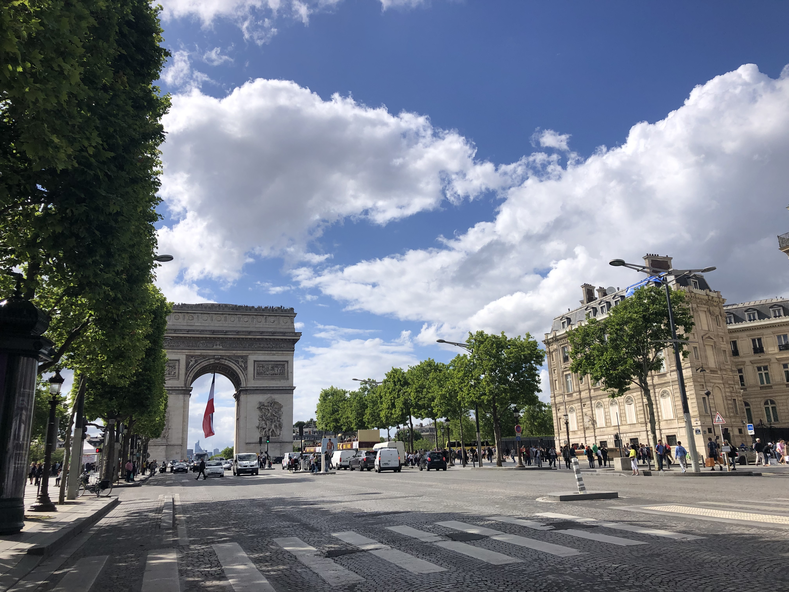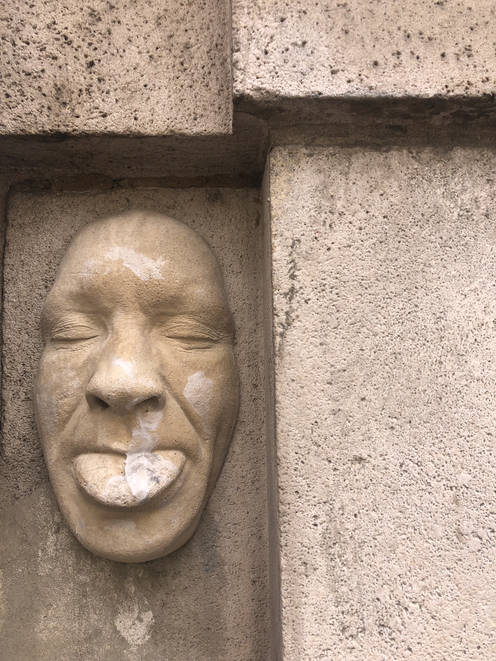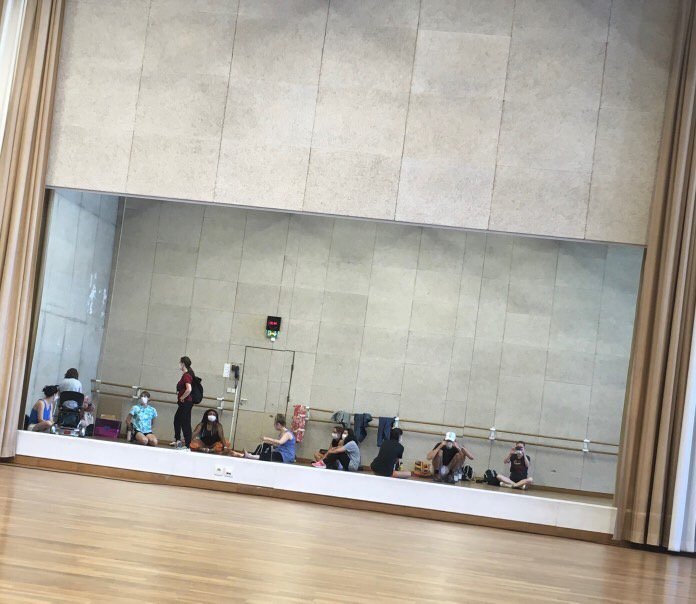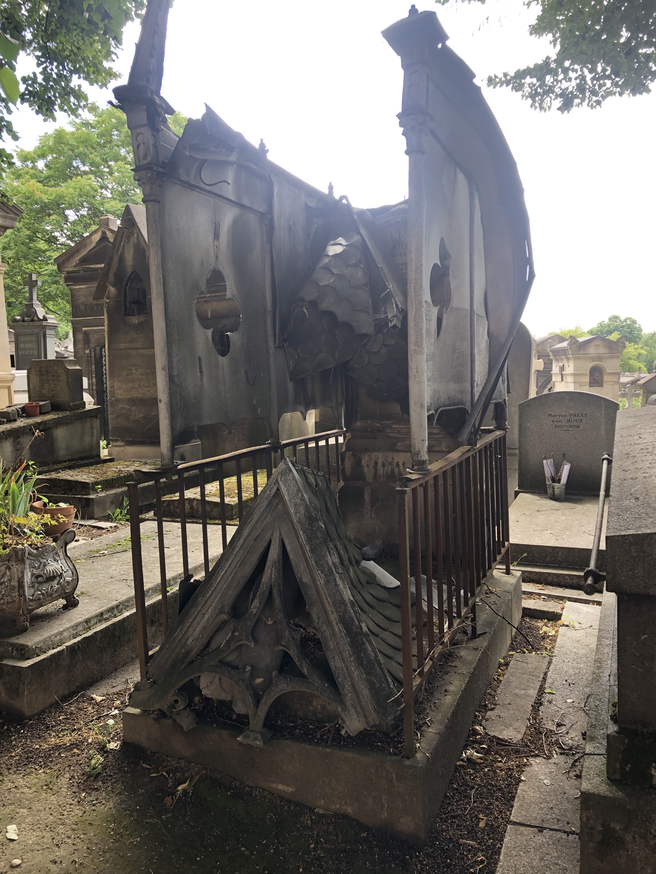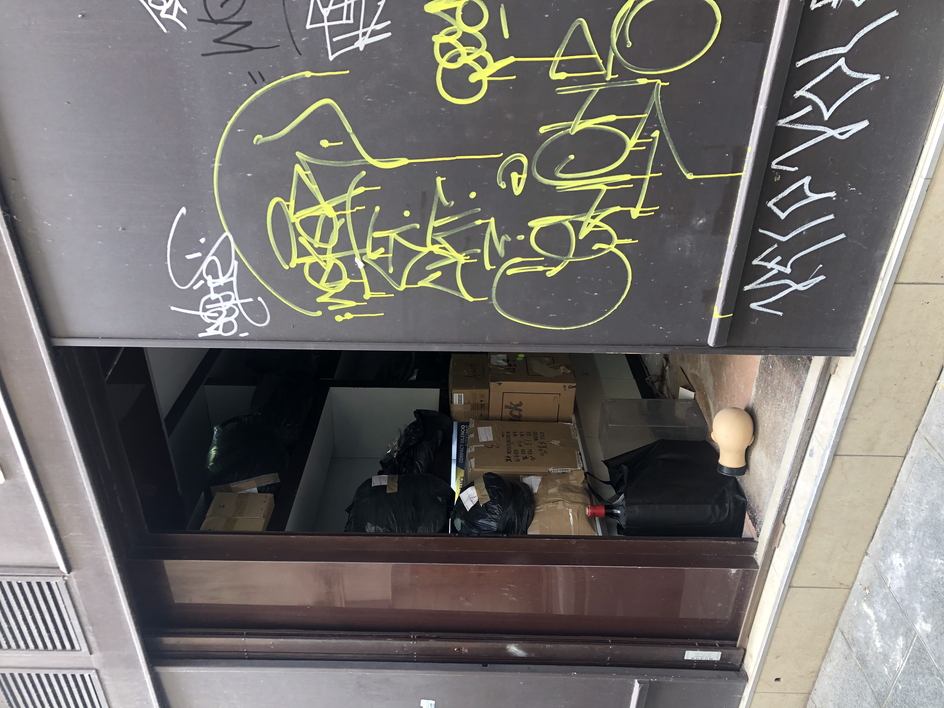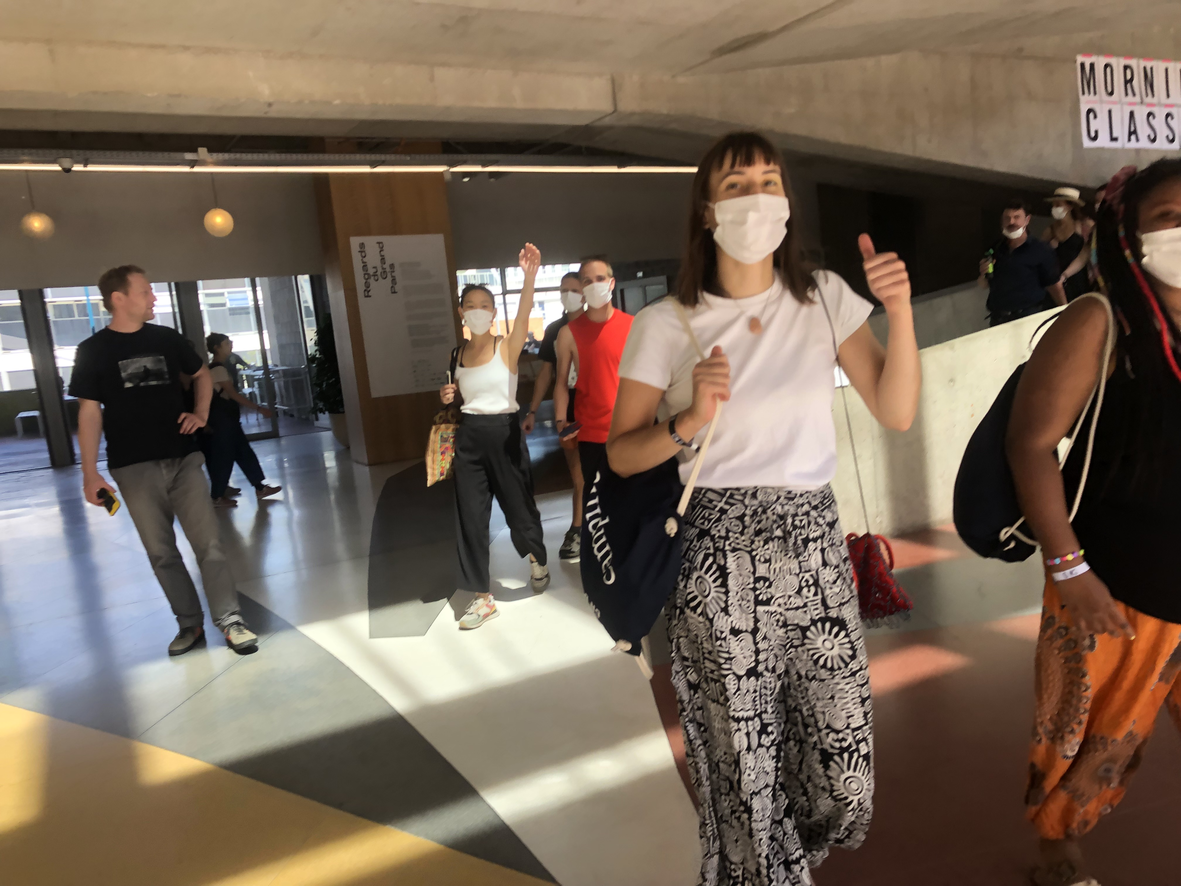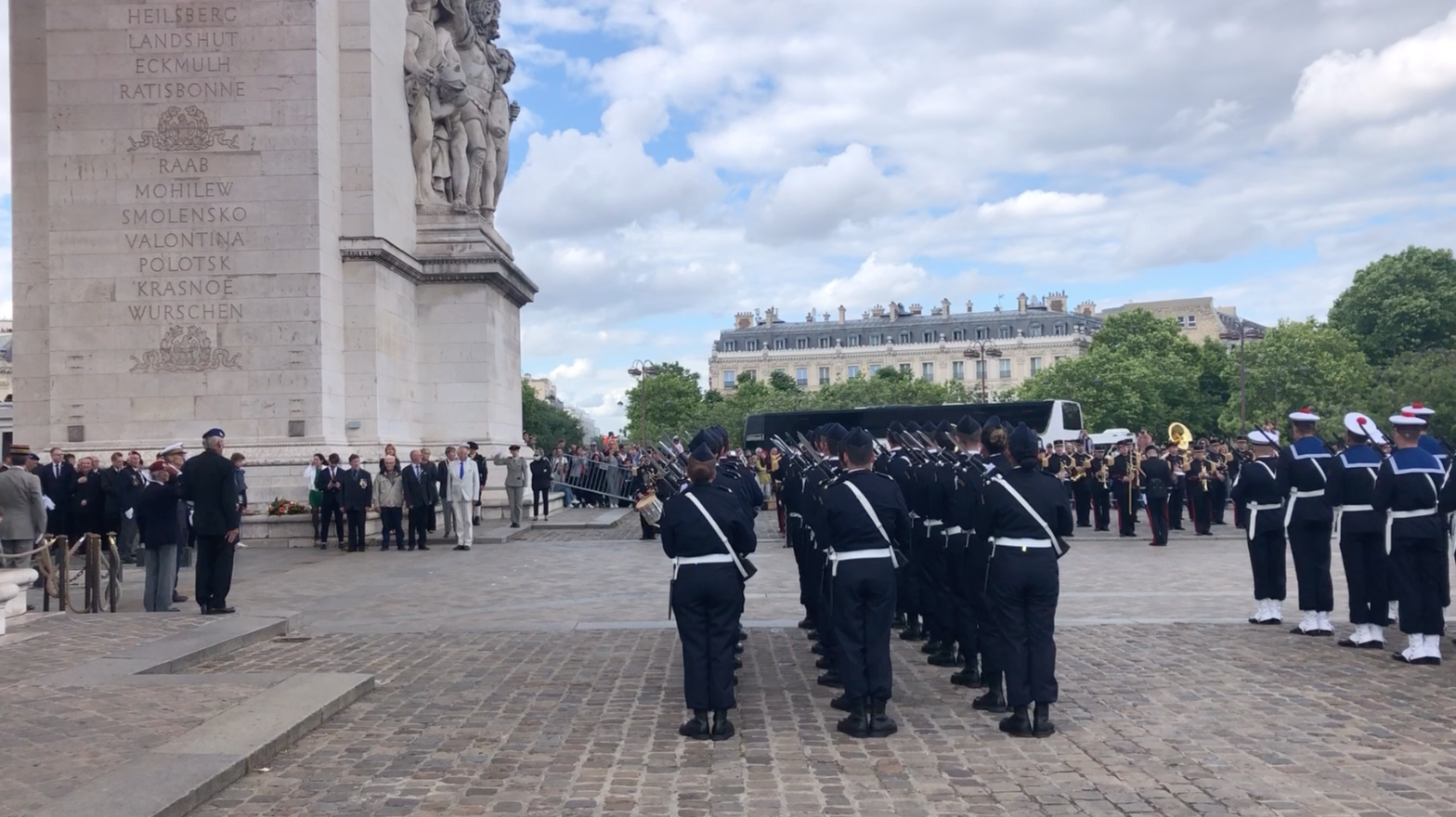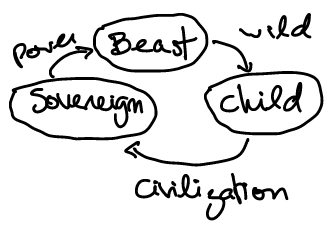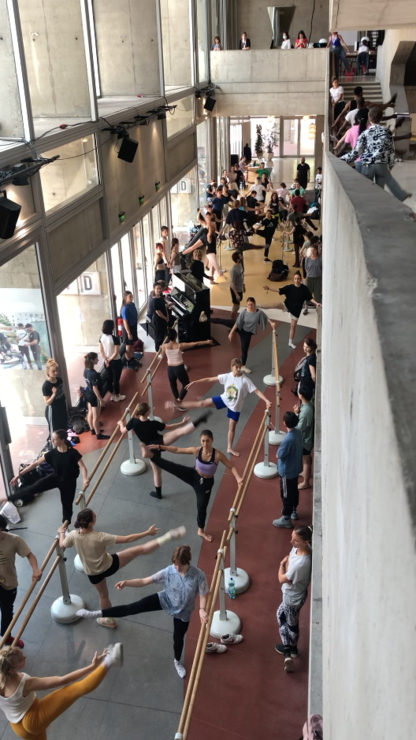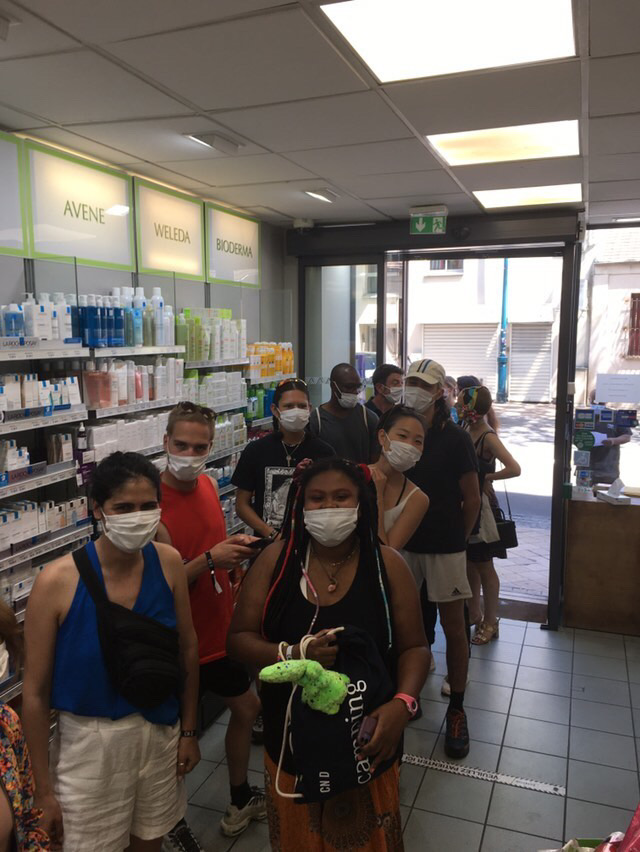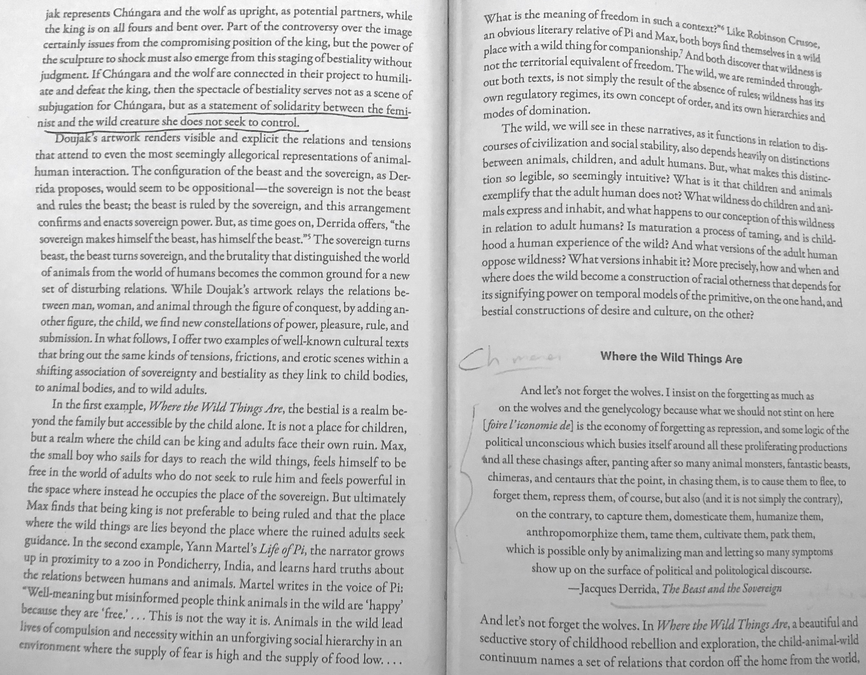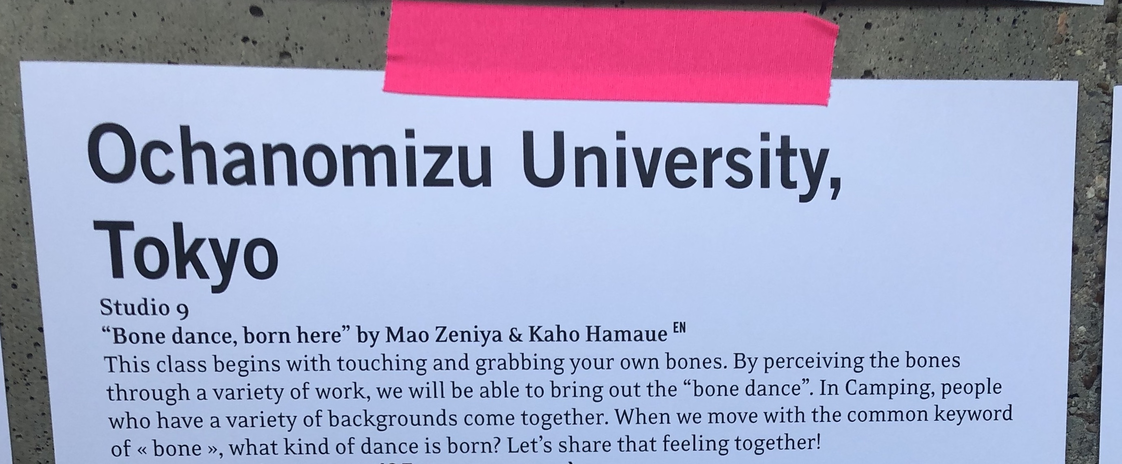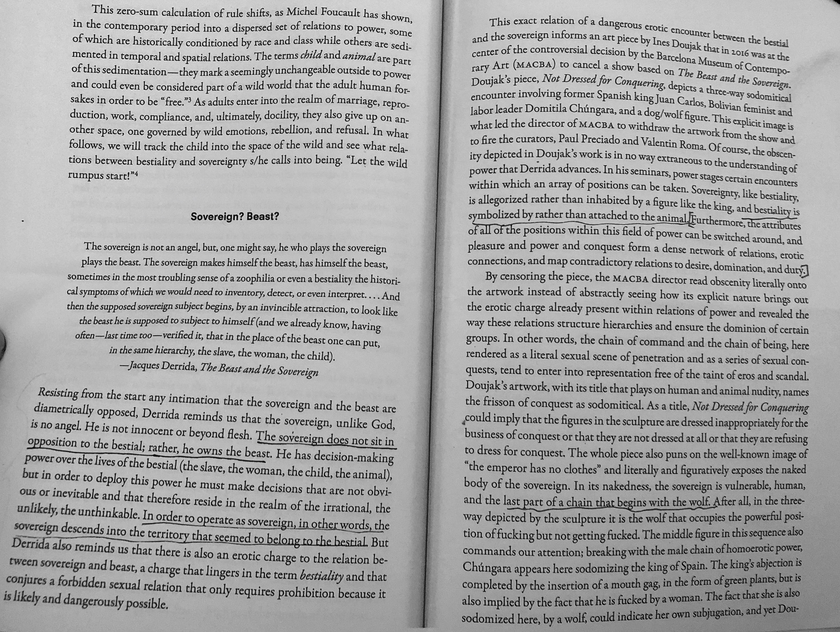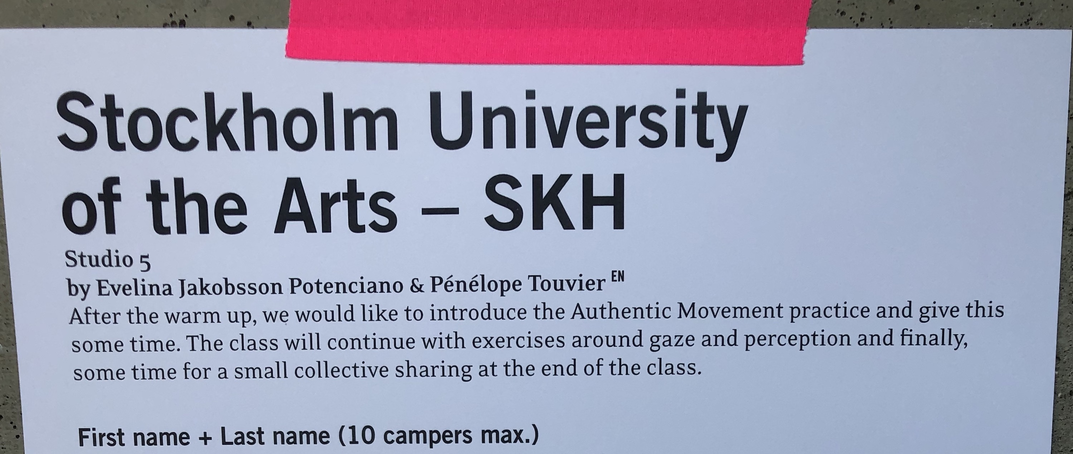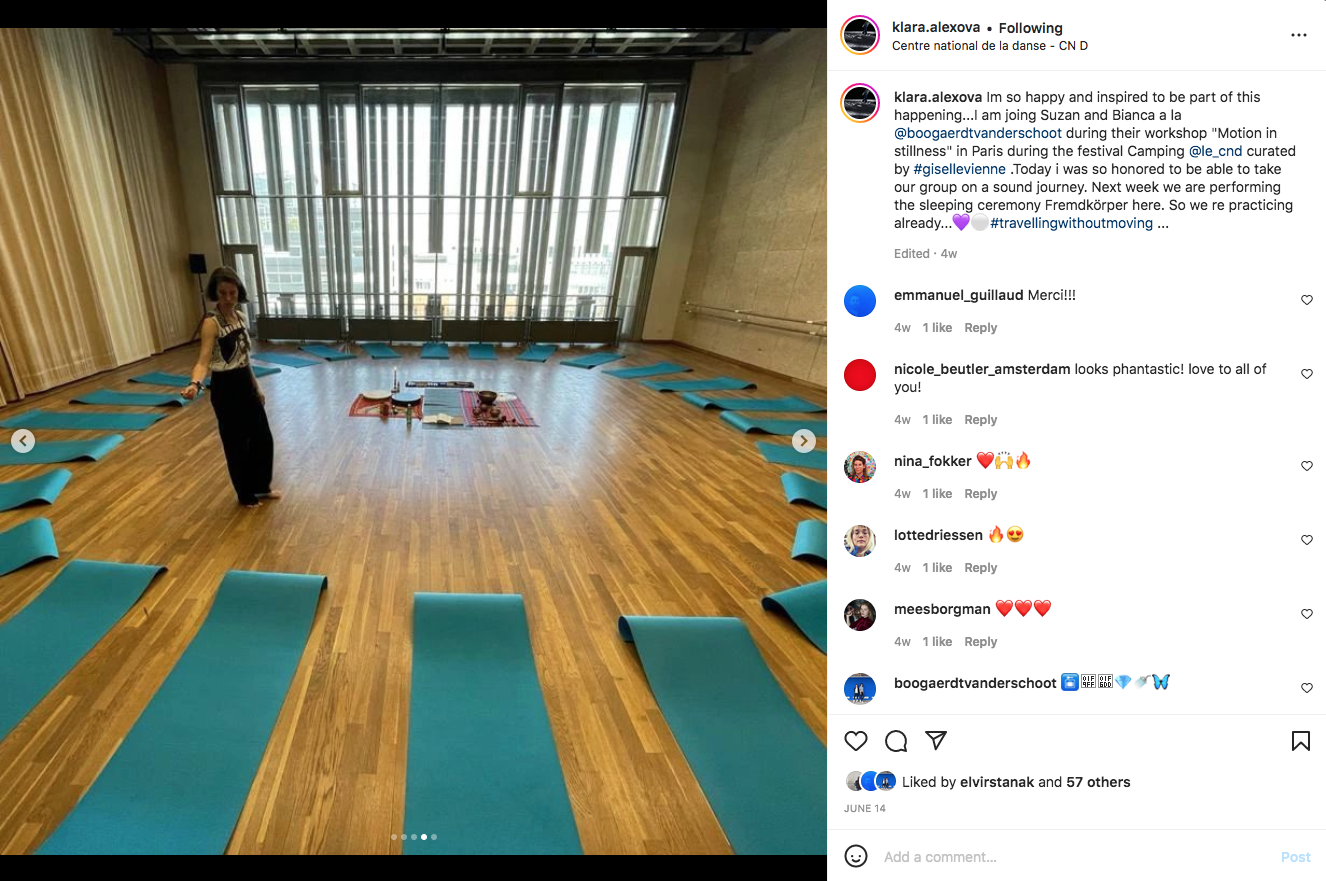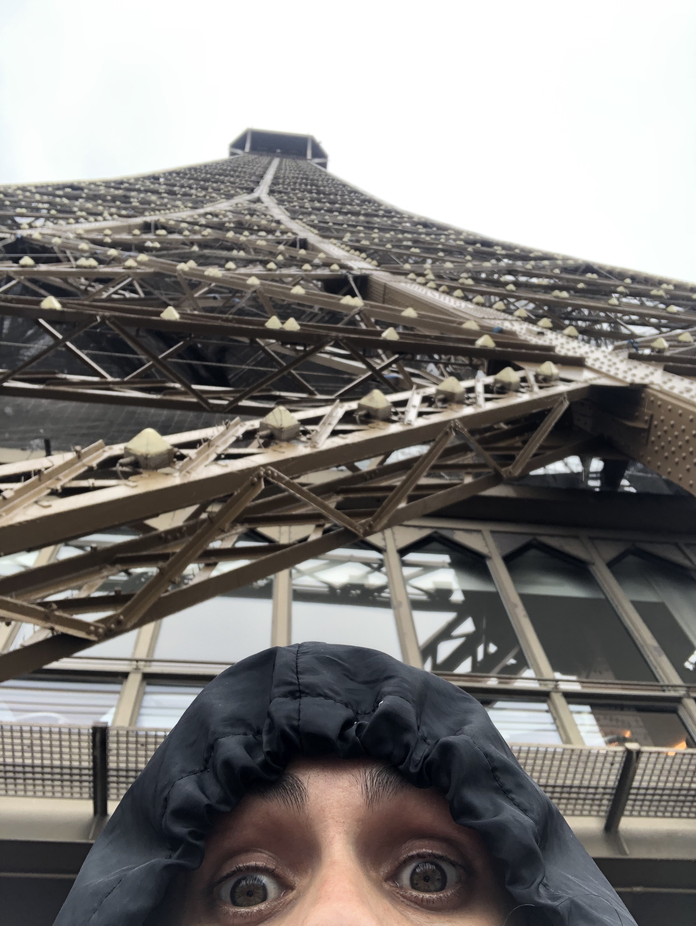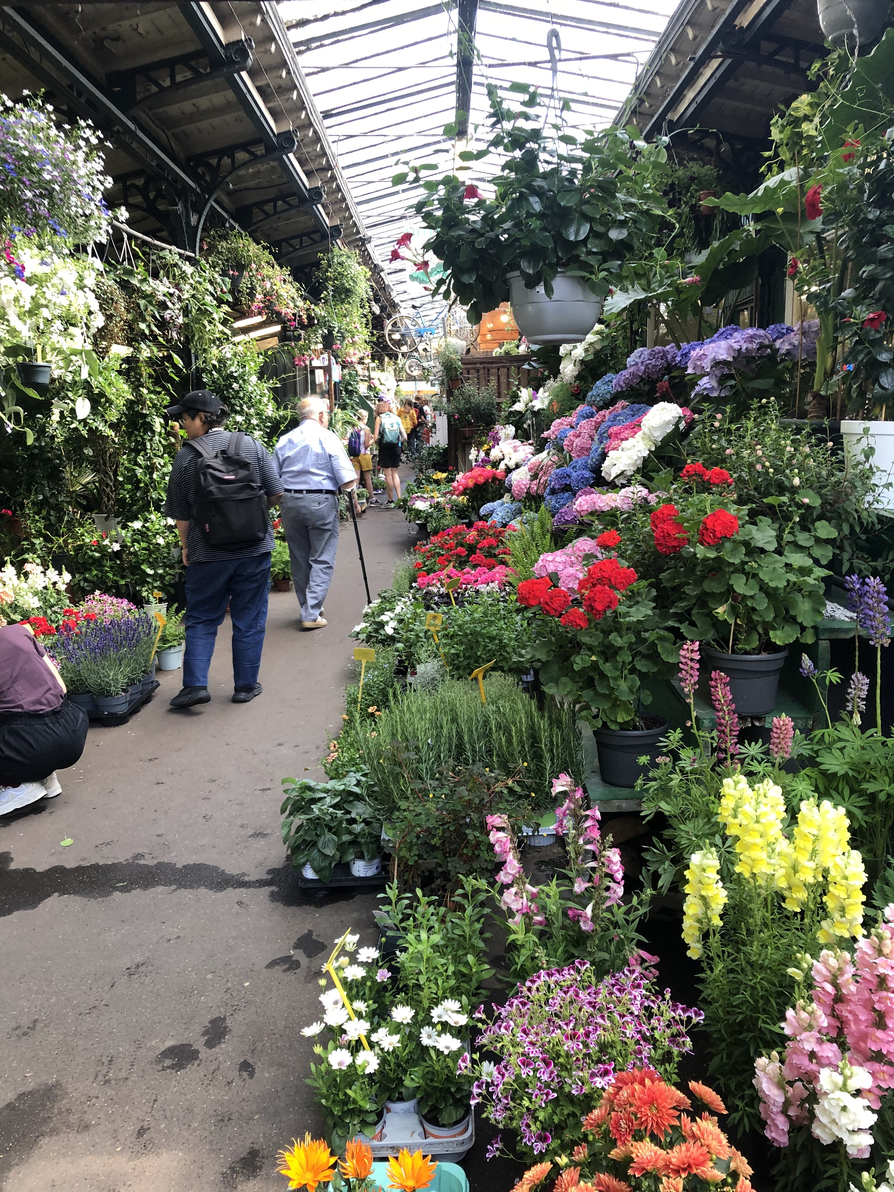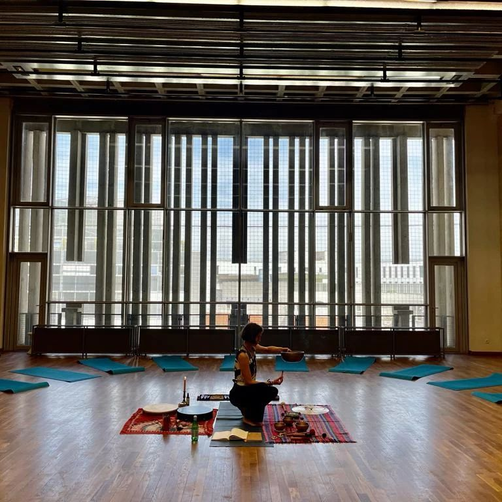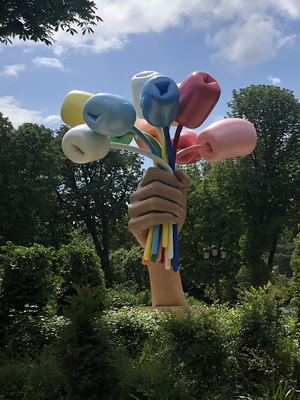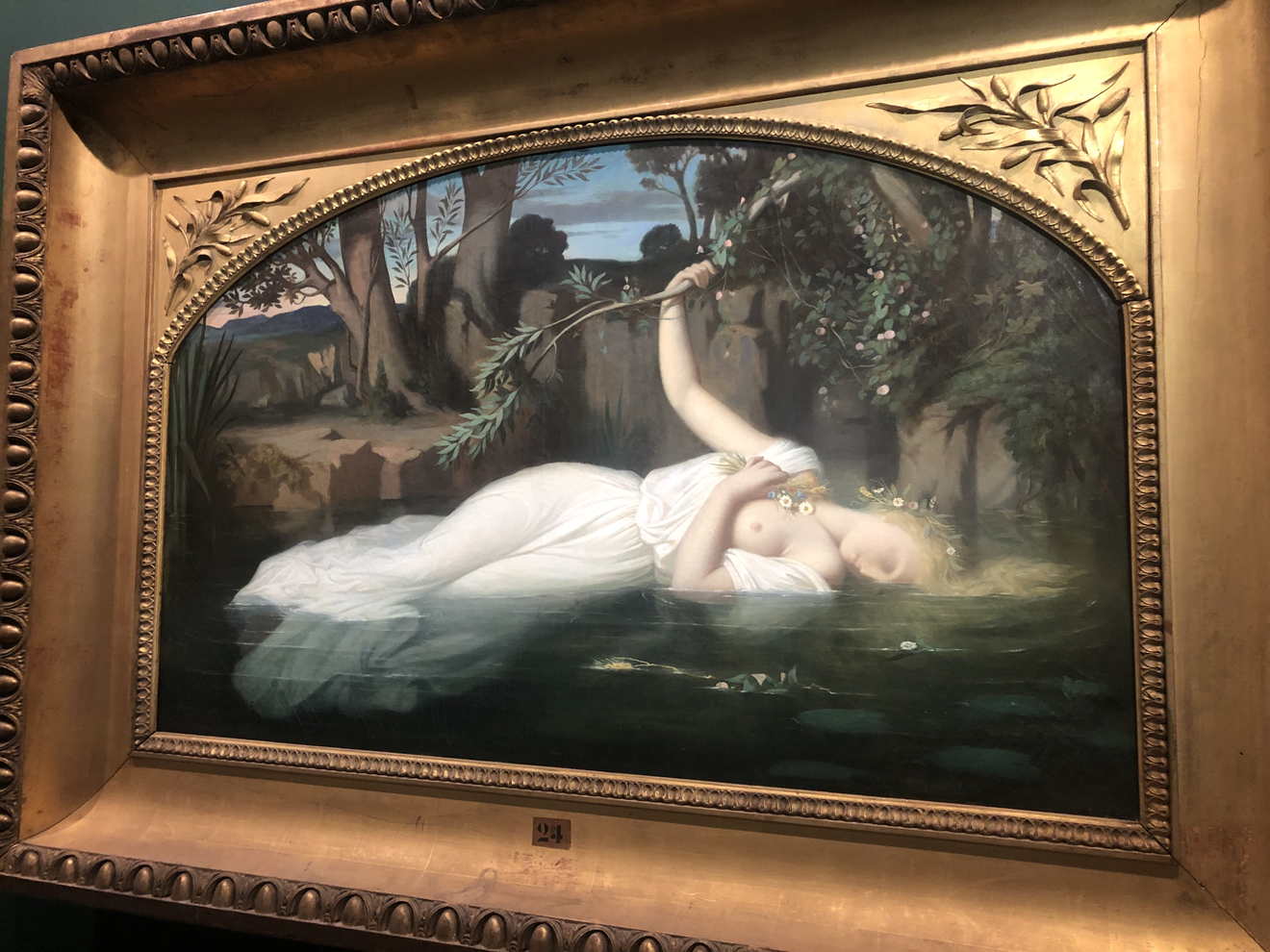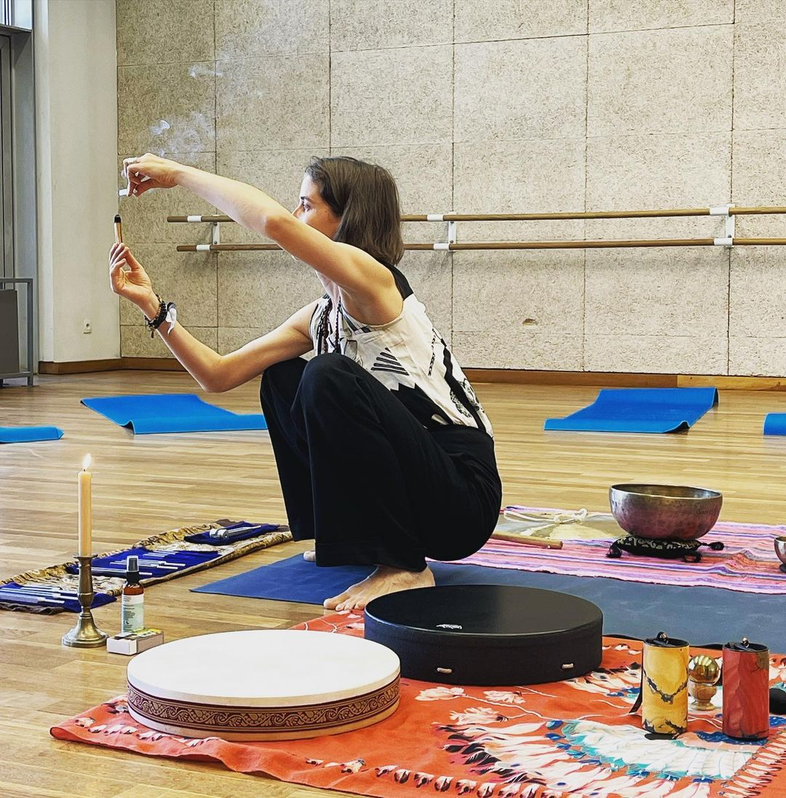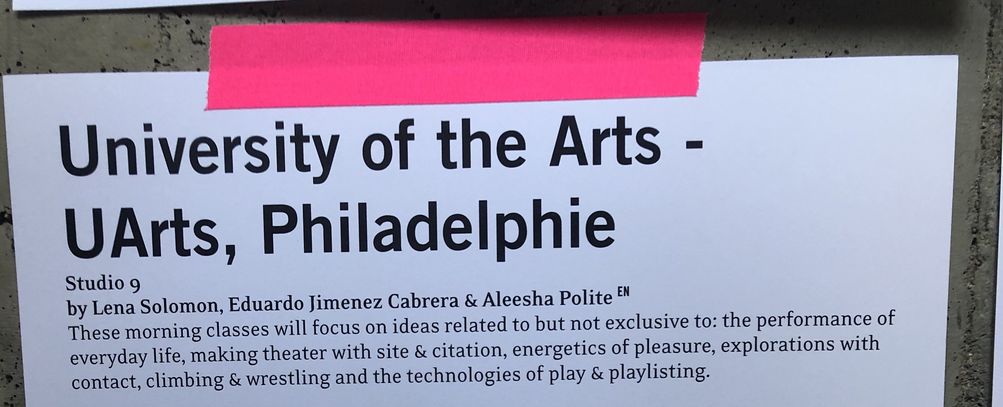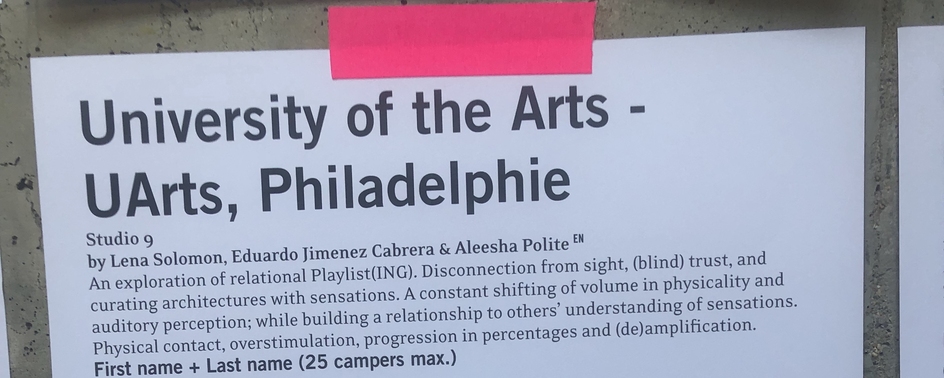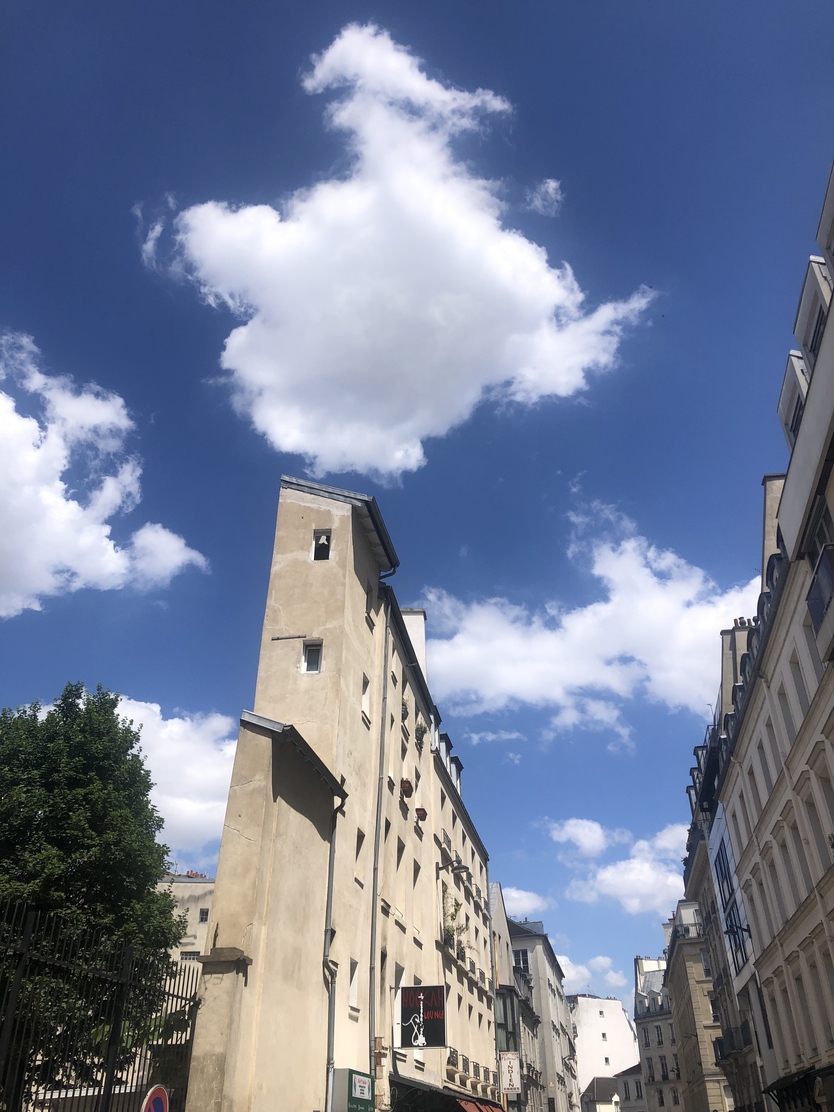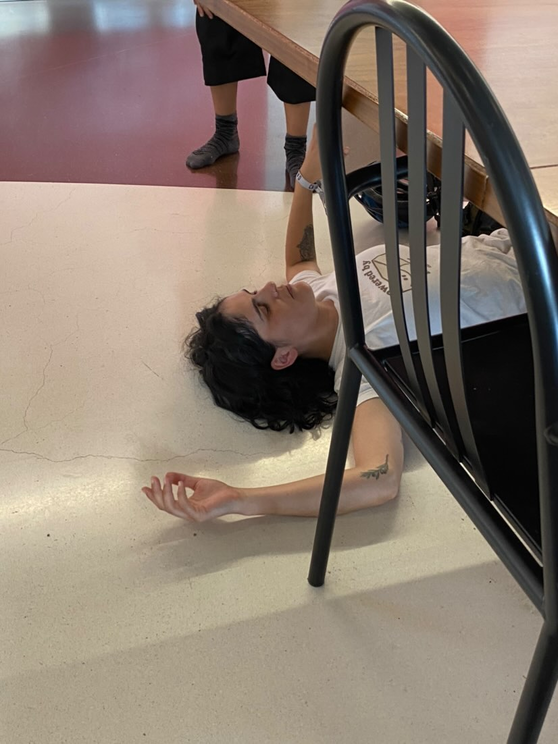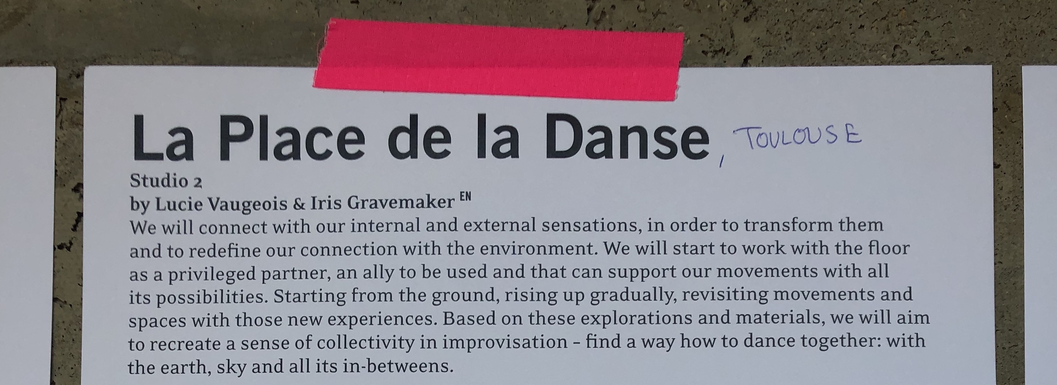Simone invites us to share what are we keeping ourselves busy with, as a way to introduce ourselves. I answer that I’m busy trying not to be busy in a sequence of works on the climatic emergency and its influence on the correlation of the body, itself environment, with the environment.
I’m wondering, and wandering, what knowledge and realities are considered valid, how the stories and histories we inherit and tell about climate change and the paradigm of hierarchical positions of humans shape identities, otherness, togetherness and influence political imaginaries for this more-than-human situation that we’re all enmeshed on. Mainly questioning antropocentric ways of being in the world (as world) and the possibilities to dissolve the frontiers between nature/culture, mind/body, interior/exterior, human-being/other-non-human. Working with water as a conduit and connector throughout the process, both in terms of its physical aspects and as a metaphor, which traverses, unites and interconnects bodies, its fluid characteristic, its ability to dissolve borders or adapt and transform between various states.
Supported by the proposals of Tim Ingold's meshwork, Donna J. Haraway's sympoietic vision and Astrida Niemanis' hydrologic and hydrocommon, post-humanism, post-colonialism, new materialism, transcorporealities, ecofeminism, black feminism and queer studies all get entangled not so much as lenses through which to see, but more like lines braiding it all together.
To try to structure and guide all of this I use a scoring system that I call a Mycelial-Fascial Score, and which is, in terms of it’s appearance and basic function - a mess of a meshwork - very similar to this document. The main difference is the constant continuity and deeper entanglement of all the lines, by tasks that promote repetition, revisiting and recycling of all the materials whether through dance, performance, ecossomatic practices, video, audio, photography or writing.
But most of all, I’m busy trying not to be busy, trying not to consider my value in relation to what I produce, busy trying not to be busy by inviting rest, napping, idleness, walking, wandering, not-knowing, contemplation, immersion in space and being present as acts of resistance, tools for imagining other futures, and as artistic practices in themselves, of care and attentiveness in a late-capitalism-climate-crisis framework.
This is, of course, much more than what I actually said when introducing myself at the workshop, but some things were important to include here to make a little more detectable some connections between my research and the experience at CAMPING.
It’s tricky to put into words these types of experiences that are so intense, transformative and that take place in such a condensed space of time. It’s yet another of the reasons I’m choosing this format instead of a linear narrative structure. It did cross my mind, and I actually tried it in the beginning, to keep a journal format organised by days, but there’s a circularity, a spiral(ity) in these processes, of reflections, realisations, questionings and other directions that intertwine, repeat, accumulate, and which, I believe, are much better served by the use of platforms such as the one offered by Research Catalogue.
With experiences like this, what can be written about it in the immediate moment or even a few weeks afterwards, can only be considered, at best, as a small sample of its real importance. The contacts made now and which can merely, possibly, materialize in the future, the ideas that are born here, or that are nurtured here and that may come to give shape or impulses to other projects, the tools learned and/or perfected here, all the interconnections-in-process that I can’t even see yet… All of it is made possible only thanks to the incredible people, institutions and structures responsible for turning hopes into realities. So all I can do is thank them, deeply. Thank you Tiago Guedes, Ana Vicente and Rute Pimenta from Teatro Municipal do Porto; Lola Chalou and Chloe Perol from CN D; Maison du Portugal and Dr Ana Paixão; Camões institute and the Portuguese Embassy; ESMAE and my thesis advisor Cláudia Marisa. Thank you.Thank you.
Bianca shares with us a little about her research, I get lost observing all these faces of new people that I'll be getting to know and share with throughout this workshop. I come back and she’s mentioning something about working somewhere in South America with someone on shamanism, of a possibility for collaboration that compelled her to investigate the shamanistic practices of her ancestors, shamanism in western society, part of her own past. She comes upon long traditions of matrilineal lineages, female based, nature worshipers, goddess worshipers. Which makes Bianca think, that actually, patriarchy is just a fad that will go away, just a phase that has lasted for 2 thousand years and that will pass, a cycle that will come back to it’s matriarchal beginnings. That will come back to the earthly, palpable deities, not aerial, distant, up on the cross, up there, out of reach, out of the body, unlike the images of clay goddesses that could be carried, wrapped in hands, hugged in the lap, in contact with the body, part of the body, made from soil, from body, from/of nature.
I inevitably wander again, to Le Guin’s Carrier bag theory and it’s influence on Haraway’s and Astrida Neimanis’s writings. To bodies themselves as carrier bags of waters that traverse us all, bodies containing multitudes of so many other bodies constantly flowing through each other. To methods for storytelling, and thus of history. To the importance of the stories we tell and of how they can change the way we look at human history from one of sovereignty to one of carrying and sharing in a collective endeavour through messy entangled temporalities, unlike the linear history full of individual mighty heroes that dominate all.
Bianca is now talking about their work with Mala Kline, a practitioner and teacher of the Method of Imagery and Dream Work by Catherine Shainberg. How they explore dream incubation in Greek society taught by priestesses, the rituals of fasting, traveling to the temple, the practices done before to prepare the mind for this dreaming to cure/heal the mind and also society, to find ways to live together: Dream about new ways of worlding.
How do we perceive the world? Bianca asks. We differentiate the day reality and the night reality. One as real, the other as not. We treat ”reality” as something we can know and fix (structure, establish, label, give names) yet in sleep rationality and reason give way to something else, to other ways of knowledge that stream in our subconscious. How do we relate to that knowledge? What can be found there? Can we dream a new world into existence? Can sleep be a form of resistance?
maybe these belonged to dreamers who decided they didn’t need mattresses to do so, maybe to people who couldn’t find it in themselves the strength to dream again and in acts of frustration decided to get rid of the memories of trying, or even yet, the Nap Ministry has been around, doing their performances and inviting everyone to rest, to resist...
Tip:
if you hover the mouse at the top left corner, a horizontal menu will pop up.
I find the "navigation" particularly helpful.
For now you can just scroll to the right, following the dashed line and arrow after reading the text below.
Two questions that guide Suzan&Bianca’s workshop:
1st how to become a dreamer - being present, aware of the senses
2nd how can we dream a new world into being
This document:
* is my attempted response to the need to make a report of this experience according to the dear people of Teatro Municipal do Porto who gave me complete freedom in relation to its form, as such:
* it’s organised - in terms of form, content, orientation - through the relations between this experience and my artistic research. This is due mainly to the workshops that I attended, since they kept revealing themselves as extremely attuned with it, this feels to me like the obvious way to try to be fair to that. In that regard:
* presents itself as a mesh of intertwined lines of thought/perception/emotion, a mycelial meshwork that does not follow a linear narrative structure and where non linearity, being lost, not knowing, disorientation and bewilderment are favoured and proposed as viable forms of being in relation to things;
* contains photos, videos (recognisable by the "play" button on the top right corner), audios that are neither complementary nor subordinate to the text, but directly entangled in it, alongside it;
* is connected/intertwined through dashed lines, image overlay and hyperlinks, all of which are options to navigate the document. So it’s possible to be led by the images juxtaposition, follow the dashed lines, click on a word or phrase in bold to see where it takes and at any given moment there's always the option to hover the mouse at the top left corner to check your location at the “navigation” and use that option to traverse the document;
* is written mainly in the present tense. I hope this helps you travel with me and put you more easily in the moment that’s being presented and not so much outside of it. I’m trying to make it not so much a reflection looking back as much as a reflection being in;
* is not optimised for mobile devices and won’t adjust to the size of a particular device, so I really advise you to navigate it on a computer.
Hover the mouse on top of the image to read a short reflection on Soa Ratsifandrihana's performance "gr oo ve"
In 2021, just a few weeks after defending the MA thesis in Performing arts at ESMAE, Porto, and still floating in that weird cloud of joy and emptiness that the aftershock of a soul-sucking-soul-replenishing-cycle that a process like this can give you, I get a phone call from Ana Vicente from Teatro Municipal do Porto. "Are you free to attend CAMPING, CN D Pantin/Paris 2022?" Is the question I remember the most from that phone call because, even though there were other important things we talked about, I was so surprised that I got stuck on that one question and kept thinking that there would be very few things in the world that could keep me away from this wonderful opportunity. I vaguely remember my thesis advisor, Claudia Marisa asking for videos of my work prior to that, but since with practice, one learns not to get one’s hopes up, that's exactly what I did, and with time forgot that that could even be a possibility.
More than 6 months later, this document is being assembled while floating on a slightly different cloud. One that’s, not surprisingly, very similar to the previous one, but with much less memories of angst and doubt, one that’s equal parts filled with dreams, imaginaries and possibilities in a very much embodied, corporeal way.
This document is, therefore, an attempt to communicate what these weeks in Pantin/Paris were but through this particular cloud, trying to be faithful to this state that I'm currently at, with all the over-enthusiasm and limitations peculiar to still being so close to the event.
Before you continue wandering the document as you see fit, I’ll just explain a few things to make it more accessible. Namely some guidelines for, and what is the purpose of, the document itself, and a brief exposition of decisions made before CAMPING even started.
We stand vertically, in stillness, the energy from the warm-up deliciously tingling in my bones, the joints still lubricated, the muscles ready and wanting to move again. Bianca guides us in a exercise based on the “neutral” body, the “zero” body that she first learned in Mime school and that she has ever since been adapting alongside Suzan for their own practice. Listen to the sounds of your body, she says, feel your knees above your ankles while at the same time listening to the sounds of the room. I’m listening to the outside world but knowing (or trying to know) where my feet are, I feel my breathing and (I try to) sense where in the room is the body closest to me.
The body of the group starts to move, conscious of the group and of each one's own body, we keep the same distance so all bodies are equidistant, we stop, start walking again, stop, start, again and again, everything that happens, every misstep or false start, is conscious, is recognised and assumed, always with energy, without traveling inside or closing in, the eyes are not opaque and empty, are not staring into space, they are in a body that is staying in the middle. This is where the performance begins, Suzan says, in this moment of being in the middle, doubly aware of the inside and the outside.
To be present in this middle is honestly difficult, to inhabit this frontier space that requires a super state of focus and concentration. I fail more often than not and realize that I’m actually in a ping-pong game where I'm either in or out, I either hear or I feel, see or am aware. Sometimes I feel like I’m doing it, that I’m more of a yo-yo, that I can stretch my senses far away while keeping the thread still connected, navigating this inside-outside, still able to pull it back whenever I want it, but others is like someone just cut the cord and I'm left standing with an unconnected string around my finger and a yo-yo lost somewhere in space. It helps, as usually with these things, to not look at it as an assignment, an obligation imposed upon, but instead a game, an amusing pursuit.
We have stoped moving again, standing in stillness, vertically, we are emptying our bodies, feeling it draining through the floor, becoming “neutral”. Close your eyes if open, Suzan, or Bianca, or Klara say and suggest that a substance is starting to climb up the feet, ankles, legs, it’s sparkling water, bubbly water, champagne, going up the hips, torso, shoulders, face, feel the face coming out, not from the outside but from within, open your eyes, what is the look of the sparkling water? Look through those eyes.
We keep doing variations of this throughout the entirety of the week, with different substances, different bodies, filling the body completely full of a body, trying out how can we travel to another body, transform into another body. And what started at the beginning of the week as something very showy and much more a representation than the feeling of it, becomes progressively more subtle until we get to my favorite one, a group improvisation about being present in/as a group. Being a group-body. It’s very enlightening to do it this way, with a “simple” task like walking (compared to group dance improvisations with complex cues) because it’s easier to notice when one is truly present, it allows for a deeper understanding of the automatic impulse to simply react or instead to choose, to make decisions from that state of perception. Because the bodies of the group-body also respect themselves, they don't just go after, they also contribute. These tools for being present are important ones for performance practice but also to connect with each other, to make community.
with Klara Alexova guiding us through sound journeys (spoiler alert: covid-19 shows up again, it really does want to attend the event)
Some decisions made beforehand:
I go to CAMPING at CN D in Pantin/Paris for the two weeks of the event but arrive one week prior to enjoy being lost in Paris.
I'm given the option to choose 2 workshops from the list of - what feels like 10 thousands of "I want to do them all" - options, each workshop consists of a set of five sessions taught Monday to Friday. I choose Dimitri Chamblas (spoiler alert: covid-19 comes uninvited and changes had to be made) and Simone Aughterlony.
I can also choose and buy tickets for the performances, I buy tickets for all of them and hope to love a few, cringe at others and feel-learn with all.
Breakfasts and lunches are also included, and luckily, there are options without ingredients of animal origin. This might not seem like something super special, but to me it really is a game changer in terms of how relaxed and focused I can be in the moment and not having to worry about what/when/where I'll be able to find nutritious food attuned with my personal ethics.
I'm sleeping at Maison du Portugal - Andre Gouveia at Cité internationale Universitaire which, being located at the southern end of the Périphérique, gives me the opportunity to observe/absorb as I cross the city from north to south.
Everything has been previously thought out, taken care of, dealt with, arranged by so many so that the only things I have to worry about are managing the money, showing up in Pantin and enjoy it.
And that's what I do.
Paris presents itself to me as a chimaera, an organism composed of very different and complete parts that work together. This, it can be said, is common in any big city, and even in smaller ones, but in Paris, right at this moment, this strikes me as more potent both through the touristic Paris and the places keep pulling me back to them such as La Chapelle, Chateau d’eau and Pantin itself.
with Colin&Farahnaz from the sonic Studio LABOUR
Dimitri Chamblas tests positive for covid-19 the morning CAMPING starts and we are asked to change our choice of workshop for the first week. At the time of choosing I had been really conflicted between Dimitri's and Suzan & Bianca's so I guess I can say that, in the end, chance chooses for me. I can't exactly say that I'm happy since I don't feel ok about a situation involving someone getting sick and I have no idea how I would have liked Dimitri's workshop if I had done it. I can admit the possibility that I would have found many connections and reverberations with my artistic research there as well, but now that I'm doing Suzan & Bianca's I can't imagine anything better than this for this exact moment.
Chimaera: 3-part mythological creature/figure, lion's head, goat's body, dragon's tail
Phenomenologically: wild dream, delusion, notion, fantastical, unfounded, impossible
Biologically: a single organism composed of cells with more than one distinct genotype, like certain plants or animals, human an non-human alike with unborn twin genomes
Non linear
Non cohesive
Irregular sense of time
Coherence = Incoherence (in coexistence)— contradiction as content - utopia on the horizon
All materials as bodies - flat ontological hierarchy
Chimaera, explain the unexplainable, classify the unclassifiable
Combination of several complete parts that form a complete whole
Make everything fit with consciousness of care
Chimaera as queerness, as we’re not there yet. Chimaera, a vision that we are moving towards, and that in proximity disappears, like a mirage - transrealities
Sunday, day of a much-welcomed break from CAMPING before the second week starts, picnic day at Cité’s park, laundry day, one hour washing, one hour drying, repeat drying because it’s still damp, I’m feeling happily lazy and sleepy, someone passes me by and we both do that double take typical of when one is not sure if the person is known from somewhere. It is. We met in Milan a month earlier at Duemila30 International Sustainability Film Festival, a short film festival in which we were both selected as finalists. At the time we mentioned that we were going to be in Paris at the same time and since I arrived we've been trying to meet but without success. And now we realize we’ve been sharing accommodation without knowing it. What are the odds?? And so we spent the rest of the afternoon, waiting for the dryer, chatting at the Maison's garden. It seems Maison du Portugal has a tendency for serendipitous moments.
Those are always the best places to be in.
The structure of Simone’s workshop feels very natural, very similar to the way I seek to relate diverse materials and how I like, ideally, to collaborate. Starting by moving freely, all together but “move how you feel you need to move to warm up, to be here”, with or without an offer of a concept from Simone to keep mulling in ourselves while doing so. A conversation follows it, either about what we just did - if something came up that’s worth mentioning -, what the sound artists were doing, the previous day, or/and what we’ll be doing today.
Today they asks us to “keep the idea of beast and sovereign present” while warming up. Sometimes it’s something that allows us to explore what we ended the day before with, others is something seemingly unconnected to what we’ve been working on. We haven’t mentioned the “beast” and “sovereign” yet, but since we’ve been working with the chimeric characteristic of the eggy movement and already know the general concept of the workshop is the chimera, it’s easy to explore this new idea for this movement session, within context.
Reading together a passage from Jack Halberstam’s book “Wild Things-The Disorder of Desire” on Bewilderment or Sovereign/Beast dimensions,
watching Fred Moten’s talk “On violence”,
moving/sitting/lying in space to listen consciously to what is being developed at the moment by the sound artists in digital sound synthesis, algorithmic composition and psychoacoustics,
collective conversations and movement explorations
are all intrinsically woven in this process. It all comes together very organically, theory-praxis, poetical-political in this learning and creating process that's adding so much to my own practice.
I’ve been working on, and arrive at CAMPING with/as this more-than-human, porous, liquid and plastic body. This body that is all at once unique yet mesh-body, entangled-body, constantly implicated in co-relation and interdependence, with/in/as so many bodies in a constant flux of processes, affectations and (de)compositions,
with Suzan&Bianca about/with/as the "zero" body, the “neutral” body capable of imagining all other bodies and embodying all, “present in the inner-outer world simultaneously”,
with Simone about/with/as the chimeric body “recognisable in its disparate parts but constituting an impossible whole”.
All these bodies come together and give trans-dimensions to each other, I feel at times incredibly close and completely disparate from them but they always resonate and start to, slowly, getting meshed together.
It’s 11 pm of the night before I’m supposed to check-out of Maison du Portugal and since I always leave early in the morning, arrive late at night and completely forgot that I would need to ask someone what to do with the key after leaving, now I’m a bit worried. The night guard is here, I show him the text I’ve been writing with the help of a translation app - my French is not good enough for this, specially not at this hour - explaining the situation. He laughs without malice and points me in the direction of someone that is, at that exact moment, passing by. And who is it if none other than Dr. Ana Paixão, the director of the Maison who has been very kindly answering my emails and making sure that everything goes smoothly with my accommodation. Of course the solution she gives me is obvious and simple, no need to let my sleep deprived brain get worried about it, but the serendipity of this moment is that due to CAMPING schedule I hadn’t had the opportunity to meet her, and it’s good to put a face to the name and be able to thank her properly in person.
How to explain CN D? And CAMPING? I try starting with CN D and assume CAMPING will just emerge.
Imagine a building totally and completely dedicated to choreography in all it’s shapes and forms, with so many dance studios that until the last day I'm getting lost trying to get to the morning classes (my sense of direction might not be the best), imagine some of those studios being free to use by professionals and non-professionals alike, studios dedicated to rehearsals, research and learning, a “health” studio to stretch, warm up, cool down, and attend to one’s aching body from all the dance being done, co-working spaces where at all hours of the day people stay typing away, several water fountains in each floor with water so fresh that I can still feel the shiver I get up my spine every time I drink from it, and did I mentioned one of the best dance dedicated media libraries in Europe, an extensive archive of resources for professionals, or the presence of the itinerant dance-dedicated book store Books on the Move? Which, might I add, forces me to send a package of books home that just won't fit on my bag! A place that favours exchange and plurality, that is welcoming and stimulant to dance, theatre, performance art, visual arts, philosophy, cinema, and so on and on and on.
Now mix it up, include 2, sometimes 3, performances per day of dance shows, daily meetings with people who enthusiastically help you navigate aforementioned professional resources, who answer all your career related questions and point you in the right direction, add the option to have a consultation with physiotherapists from the Institut National du sport or working with dance companies for a symbolic price, having lunch overseeing the canal while happily chatting away with all the new people you meet, morning classes taught by students (there’s 300) of the 30 or so invited schools from all around the world, giant weekly classes where everyone attending comes together at the atrium to share on a specific technic or genre, more than 30 workshops with renowned choreographers and creators, two big parties to help you mingle even more, daily free workshops for non-professionals that give you a glimpse of just how diverse and welcoming this place is even when CAMPING is not going on, a place so inclusive that even in, or despite, cosmopolitan Paris you feel you can really breathe once you get inside. Sorry, I forgot to mention, when you are imagining this magical place, remember that I’m still floating on the aforesaid cloud and please know that I have a tendency to romanticise and exaggerate everything. But still, even considering that, it does sound pretty amazing, doesn’t it? That’s because it is.
Chimaera as delusional, something in the horizon, a mirage in oscillation, incoherent and coherent, glimmering, shimmering, to and fro, back and forward, creating an illusion that makes us stop in bewilderment,
* Violence is complex and the way we refer to it needs redefinition. It is also, for example, a forceful pursuit of something,
* Violence as a refuse of brutality, of brutal forces of individuation. Violence against individuation,
* Individuation: the creation of subject by external forces,
* Mess/mass: not neat, feast/festival, celebratory, exaltation, gathering of differences, mass celebration, enthusiastic gathering, engaging.
* Messing through separation, the individual, refusal do be singular
* The community is defined by those it excludes
Simone brings eggs to the first session of the workshop, after all the introductions, presentation and discussions of the concepts, a box of eggs is the first material we’re working with. We observe them, touch them, roll them around to watch how they move. The most evident is it’s randomness and unpredictability, it also never moves in a straight line, is always leaning and making curves, by having such a small point of contact with the ground it makes it appear to be in constant motion, or in potential for movement/suspension, the liquid inside the body influences the continuity of the movement (by weight) more directly than that of the human body. We explore these notions in motion, we’re not trying to become eggs, but to assume their movement logic. Colin and Farahnaz are working with granular synthesis, sometimes it sounds like the sounds from inside an egg, others with more swoosh, but always erratic. When the eggs come into contact with each other the effect of said contact is more noticeable than between human bodies - which are at the same time heavier and softer - there is more direct reaction from the contact in motion, it is immediate, even the slightest touch. By working always in group this makes our movements soft without the performativity of softness because we are taking care of the mass in the mess, we don’t want to hurt each other, we are fragile, we don’t want to break one another, this togetherness is attentive.
An egg, apparently, is a chimaera in its shape which in turn influences the very characteristic way of movement of an egg. There's also this sense of becoming about them, prior to individuation. After this first day, everytime we all improvise together is in/as a large assembly that seeks contact without the promises of individuation coupling - a complex gathering of differences, a mess.
One of my favorite characteristics of Simone’s way of relating with us becomes clear by the conversations we carry as a group. Because it’s not so much Simone talking and us listening, giving us only context, explanations or instructions, but more like a forum, like a process of a collective creation. And this happens throughout the entire process, with propositions from all of what we could do next and how, questions that are posed and answered from and for all and not exclusively by Simone. It makes me, us, feel like an integral part of the process.
I stay for one day longer in Paris so I can attend Pride and the vibe is so similar that I’m thinking that it could as well be the CAMPING final party from the night before. Of course not in terms of the sheer volume of people and the historical importance of it and its origins and the reasons for its continuous existence and the march and the slogans…
but both have the same special quality of togetherness, exaltation, mess in the mass.
I’ve been spending a lot of time here with my eyes closed. In morning classes, afternoon workshops and even performances where we’re specifically invited to close our eyes. I like walking in the street with my eyes closed, but only if I feel safe, it’s never a play on risk per se, because it’s only for short periods of time if I’m walking in a straight line on a empty street, but here is like everyone keeps inventing us to do so, to trust, which is, to me, another invitation to rest, to see with eyes closed, to look with more than the eyes, to other modes of knowing.
What strikes me as one of the most interesting things about Suzan&Bianca’s workshop is their constant looking for and questioning performative possibilities of everything being done. Every exercise evolves into material that could be potentially presented to an audience, at least in the sense of how it is developed and thought about by the directions proposed and comments offered. It allows us to see and be a part of their artistic process in action, how they would solve/unlock/expand/subside something in a very clear way.
It is, in that sense, distinct from Simone’s where the performative perspective (in terms of potential for public presentation) is rarely commented or the main point. If asked directly about it by any participant “how would you use this material for a performance?” they think about it and give an honest answer and/or invite anyone from the group to give their opinion (they always treat all of us as collaborators, co-creators sharing knowledges and experiences), but that’s not the core of what we’re doing. With Simone’s I feel I’m still in the very beginning stages of a process, trying and testing, seeing where the concepts and movements take us without much consideration for the presentation aspect of it yet.
I’m not comparing these different approaches in any derogatory way, they’re different and both very useful. One and the other share a common base of generosity, openness and honesty with us participants that feels very inclusive and honouring of the principle that all parties involved share and get something out of it.
Today Bianca asks us to bring a broken object with us, something personal, something that’s damaged and/or lost it’s use. We sit in the usual circle around the room and write in a A4 white piece of paper one word, either “world”, “self” or “as”. In turn each of us gets up, shows the piece of paper to everyone and places it in the center, careful to create another circle with it while constructing the phrase “world as self as world as self as world…”. Each one, one by one, enters the circle made by the papers and shares their story, their memories from yesterday’s guided visualisation, the one of the house in the forest with a corridor full of doors, the one with the door to a room with boxes, the box we saw and the broken object that we found inside of it. How was it broken? How was it when it was complete/unbroken? Can you repair it? Do you?
Bianca proposes a variation “don’t worry about telling the story to us, tell it to the object in your hands.” And another “talk as if the object you have now in your hands is the one you found in the box yesterday.”
“You can speak in your native language if you prefer and someone translate it in English please”
“You can speak in a very intimate way and the one who translates will speak it out loud”
“If your own language is English, can someone please say it in French?”
“If you understand the language of the person speaking in the center can you translate it in your own language?”
“Don’t wait for the translation, just keep going. Everyone translating, don’t wait for the others, just translate what you hear, loud or quiet, just go with it.”
This chant like, liturgy like dynamic that’s created by the support of the group turns this highly personal, individual, “closed” experience into something open, shared, communal. It also transforms the relationship with the object into something universal. By describing what one saw speaking directly to the personal object that is in ones hands, referring to it as if it were the other, makes it possible to be any other, any one of everything that is broken, anything, everything.
There’s a “ding” sound every time someone enters the small pharmacy and for a few minutes a continuous ding, ding, ding, ding makes the soundscape of more than 20 people queueing from the counter to the street outside. Some of us are nervously laughing about the situation, making jokes, sharing Covid stories, others boringly scroll their phones and forget to put their masks back up when these insistently slide down, others are genuinely worried and mumble “I can’t be positive, I have a show this weekend” or “I have to fly back home in 3 days, I can’t get suck here, not again.”
I’m fairly confident I’ll be testing negative since I've recovered from my first covid experience just two weeks prior to coming, and what’s really grabbing my attention at the moment is what a great performance all of this is, from the moment outside studio 4’s up to this point when the owner of the pharmacy offers to test all of us for free.
We end up not completing the last part, the healing itself, the ritual of reparation which we only touched on briefly the day before.
The various rituals of preparation that we have been developing - being present through the exercises of the "neutral" body and the diverse guided visualisations - also loose an essencial part of it without Klara present to guide us through more sound journeys.
In my memory, a building this big ordinarily has the stairs as the main connector between floors. Elevators are usually also present, yes, but the ramps, when or if present, are more often than not a small shabbier alternative to the stairs and not their equal. When talking with a member from the inclusive dance group Dançando com a Diferença and mentioning how in love I am with these ginormous ramps, they sigh “you have no idea how refreshing this place is”. And I don’t, I really don’t, and yet I can still feel, even if in a different way, just how this not-so-simple approach to mobility makes the entire building feel much more like a continuous movement that we’re invited to make, to take part in.
It’s now time to start putting this chimeric body together at Simone's workshop. Three people, one the child, one the beast, one the sovereign moving as the same organism.
Some questions occur:
How to maintain autonomy, concrete form, not assimilating the other in the mess?
How to be part of the mass and not being assimilated?
Different parts of the same organism is not the same as a plural organism
What is the glue? The binding material, how do we hold things together, what binds us in togetherness? This was also debated when doing the mirage, more in the sense of the glue as the transition and in that case it was fairly easy because the body would naturally, due to repetition and exertion, provide an organic transition. Maybe our way to approach it will be by being extra sensitive to receiving, by keeping the receptivity that we just experienced with the exercise by the sound artists.
For the chimera I’m a part of this works particularly well and even though for me is always too easy to fall back into the comfort zone of semi-amorphousness, we manage to keep three different parts of the same organism creating something together, moving in space.
I go up the ramp to the second floor hoping to schedule the meeting with the professional resources and enjoy a few minutes of quietness on one of the lounging areas outside studio 4 were Suzan&Bianca’s workshop takes place. There’s a few things about yesterday’s exercise with them that I need to process by writing it down. I sit next to a fellow camper who's also writing, bent over her notebooks. More people start arriving and only then I notice that one of the women who usually checks our names at the beginning of every afternoon session is standing at the door looking both serious and apologetic. Someone tested positive for covid-19. Klara who only yesterday gifted us the incredible experience of the sound journey. We all need to get tested. Now. CN D has already arranged it with a pharmacy nearby. We can buy the auto-test or pay for them to test us there. More people arrive and variations of this repeat over and over again: surprise, worry, a quick acceptance due to habit, looking inside bags and pockets for a mask, forming a line, waiting. We go down the ramp, through the doors and across the street, a few people stare but quickly go back to what they were doing before, seeing a line of people in masks is nothing new, it just hadn’t happen at this year’s edition but it would soon happen again.
In the end, due to a couple positives, some negatives who don’t want to risk it anymore and Suzan being absent doing a show in Germany, our very vibrant and diverse group gets reduced to a dozen of people. The girl writting on her notebooks is no longer a part of it. This drop definitely changes the energy, and consequently the direction, of the workshop. From the structure of it that they shared with us at the beginning, and which consists of:
- Acknowledging what is broken
- Preparing the mind/body for the healing - ritual of preparation
- Doing the healing: Performance as a place to transform
A deep massage, the whole body vibrating, releasing, completely physical without any body-to-body touch, without skin to skin, but in contact through the vibrations of sound. And without being rationally thinking about something in specific, not about the sentence/intention that was supposed to guide the session “I see myself as the world, and I see this world as it is”, I saw colours and shapes moving around, expanding, contracting, exploding and dancing, light behind closed eyelids. Tentacles of jelly fish, entangling, connecting, braiding together, with, slipping and sliding on each other, pulsing in constant motion, quiet and permanent, invisible but perceptible. Sometimes like fireworks, or a starry night, but soft, or with bang, just unbroken impulse to connect, to bring and be together, as it always is. Lots of white flashes, but also purples, violets and lavenders, some bright or fading. Moving like water, like a surface of water, fast, but also deep water, moving slowly, paste-like, with plasticity and body, like a gel of bodies gliding.
Such incredible tools I'm deepening my experience with here.
We’re starting this afternoon session of Simone’s workshop with an exercise proposed by the sound artists Colin and Farahnaz. They propose that we pair up and for 20min, one at a time, explore CN D building with our eyes closed. Then we switch positions. This is happening at the exact same day when just this morning, by pure coincidence, I was walking with eyes closed along Pantin’s canal. Here the idea is to be more autonomous, the partner is only there in case of necessity and to prevent serious accidents. The point is to pay more attention to the sound. I crouch under tables and feel safe and secure, I roll on the floor knowing there’s no way I can hurt myself, my partner would never let that happen, I notice the differences of sound when going deeper into CND’s administration offices - at the post-exercise conversation someone comments the politics of sound, how the closer to the CND administration and direction spaces the less noise there is, the calmer it is - and how in general sound gains density with the eyes closed, but most of all I bump and stumble climbing up stairs but slide through ramps and start to uncover the reason behind my fascination with them is connected to my research on fluidity and liquid continuity. Ramps allow for a continuous motion while stairs an interruption, the movement in ramps can be done securely and speedily even with eyes closed, allowing for an effortless surrender to gravity.
Morning class with students from Poitiers School of Image, the description doesn’t give away much but there’s mention of Tim Ingold, so I’m in, and very excited. They start by sharing with us all the conceptual context, inspired by many thinkers/doers, that sustains the class. How the subjective ”I” becomes the subjective “US”? How poetry is not a tool to understand the world - the world is incomprehensible - but to build a bridge, a place in a place, to be in the world. How poetry is not a luxury but a necessity: “Poetry is not a luxury. It is a vital necessity of our existence. It forms the quality of the light within which we predicate our hopes and dreams toward survival and change, first made into language, then into idea, then into more tangible action” Audre Lorde. How to find the poetic in the environment with movement, like the two artists that they mention and whose names I don't catch that ask the participants in one of their actions to walk in neighbourhoods looking at the little details, to be open and look at everything, give attention to the world. And so we start walking by Pantin’s canal, in pairs, one of us with our eyes closed, feeling Pantin, trusting that te other person will take care of us, resting assured that it’s safe to relegate the dominion of the visual.
